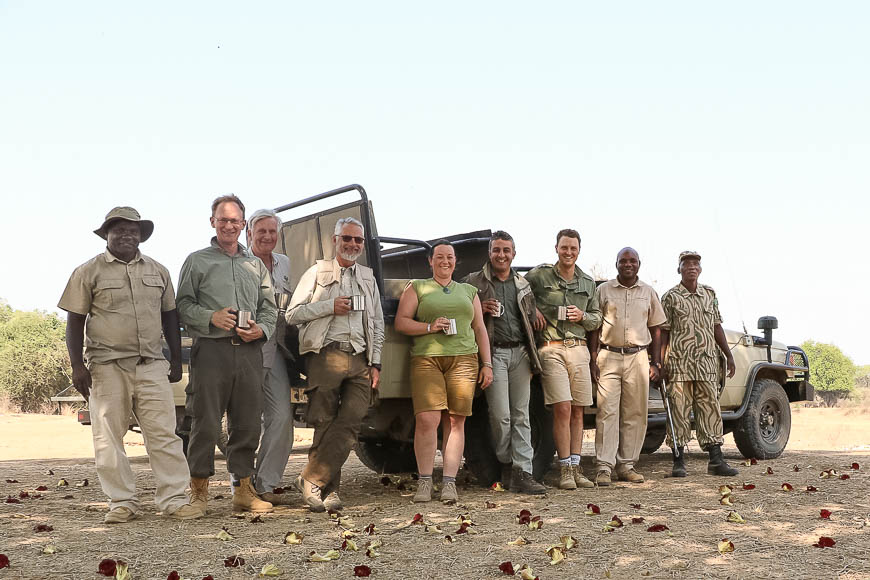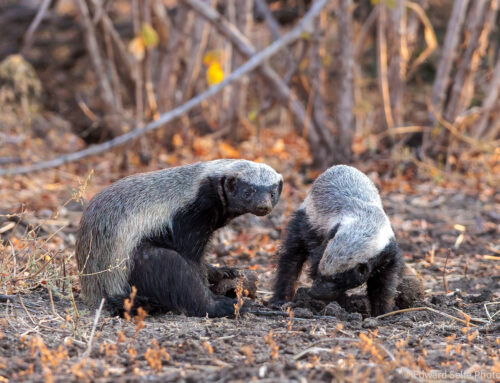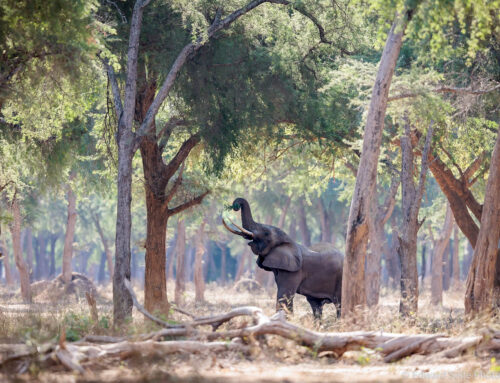I have never promoted safaris in the Luangwa based on the expectation of seeing any particular sighting or event. Certainly there are sightings that are more likely at some times of year that others, and the dry season usually offers the best chance to see game. But when a tour operator in the UK promoted my latest trip as “Legendary Luangwa”, I wasn’t prepared for how appropriate this name would turn out to be!
A group of 5 guests – 3 from the UK, 1 from Germany and 1 from USA – joined me for an extended 12 days in the bush, split between Robin Pope Safaris’ excellent camps and the always-reliable Lion Camp. I had been in communications with all the guests over the last year and all our expectations were high, not least because the South Luangwa has been giving me increasingly fantastic sightings over the 10 years that I have been guiding here.
We started with 3 nights at the well-placed Luangwa River Camp. This centrally-located camp has a private crossing point into the National Park allowing us dawn access to one of the best wildlife areas in Luangwa. While other camps make use of this area, we are able to enjoy sightings privately during the best part of the morning.
Before we’d even set out for camp, one of the guests found a chameleon in the bush behind their tent, so we all enjoyed breaking in our cameras during afternoon tea! It was a great way for me to chat with my guests about their settings and ensure that I understood their level of expertise and camera setup before we encountered our first big sightings.
It was just as well we did, since we had barely crossed the river when the sightings started to flow. Initially, it was impalas in soft afternoon light, then very quickly a pair of mating lions and a brief visit to a carmine bee-eater colony. While we were at the colony, a herd of giraffes emerged from the bush on our side of the river and splashed through the shallow Luangwa! While I chatted with the guests and helped oil the rusty cogs of photographic technique, they all bagged some wonderful shots of the first afternoon’s sightings.
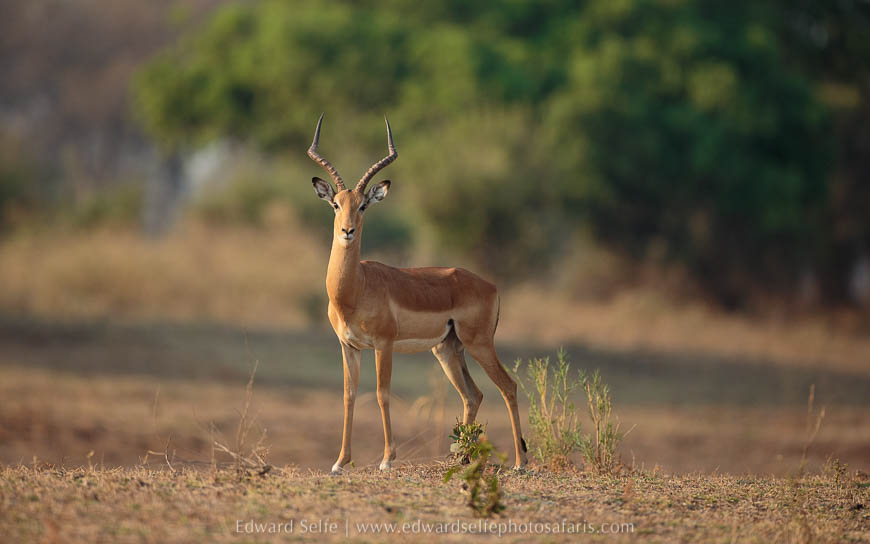
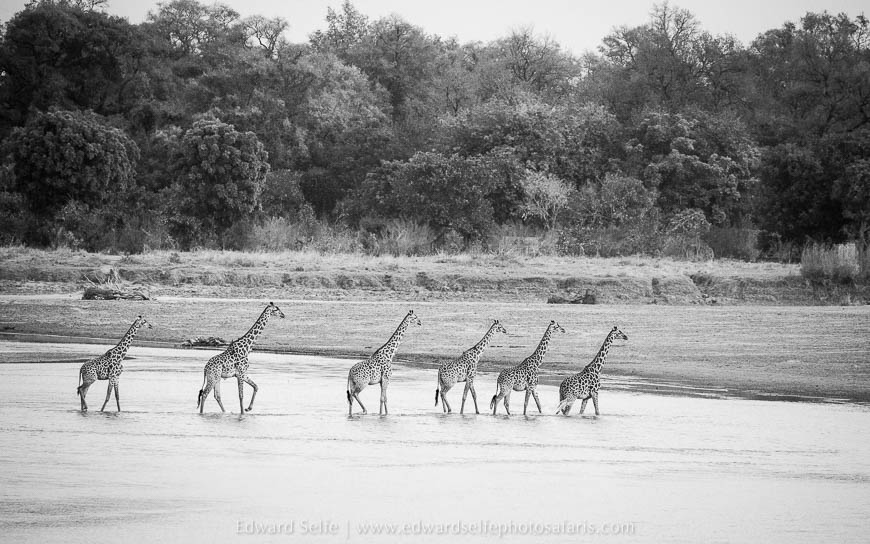
I usually hope to enjoy 2 or perhaps 3 good photographic sightings (where animals, behaviour and light combine together) in one drive, with lots of other sightings of course. Our first afternoon had given us 4 or 5 already. As the light was dipping, I tracked down a large male leopard as he moved through a gully, but he got away from us before we could take some photos! I knew this was going to be a good trip!

Leaving camp very early the next morning, I found a large male leopard by tracking the calls of a bushbuck and several squirrels. He appeared to be attentively looking into the thickets where more alarm calls were coming from, but he didn’t move from his spot at the base of a large tamarind tree. As the light came up, we repeatedly moved the vehicle and achieved a variety of different shots despite our subject barely moving. A puddle of leopard.
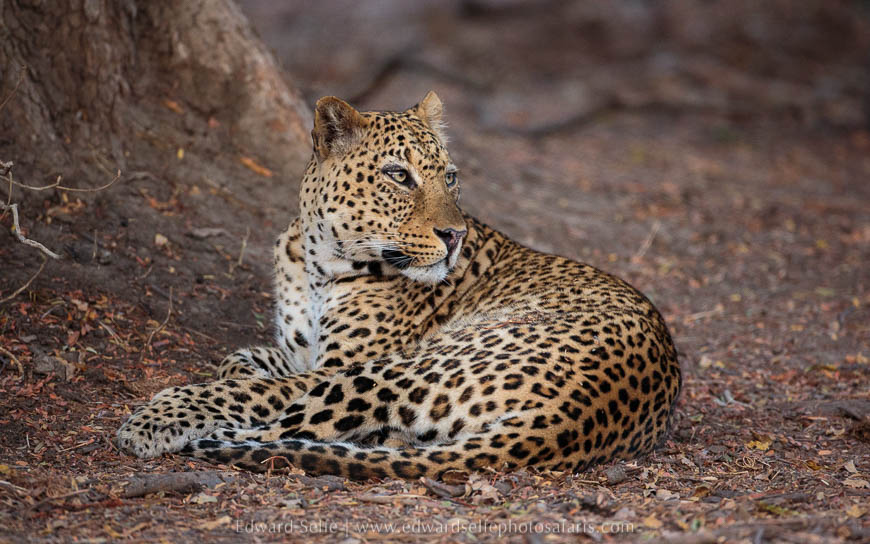


Eventually he moved off into the thickets towards the river. I knew there was a small waterhole in the sand, so we drove round to the water. In fact, he stopped on top of the bank and looked down on us from above – magic! I was really pleased that my guests were having such a great start to the trip!

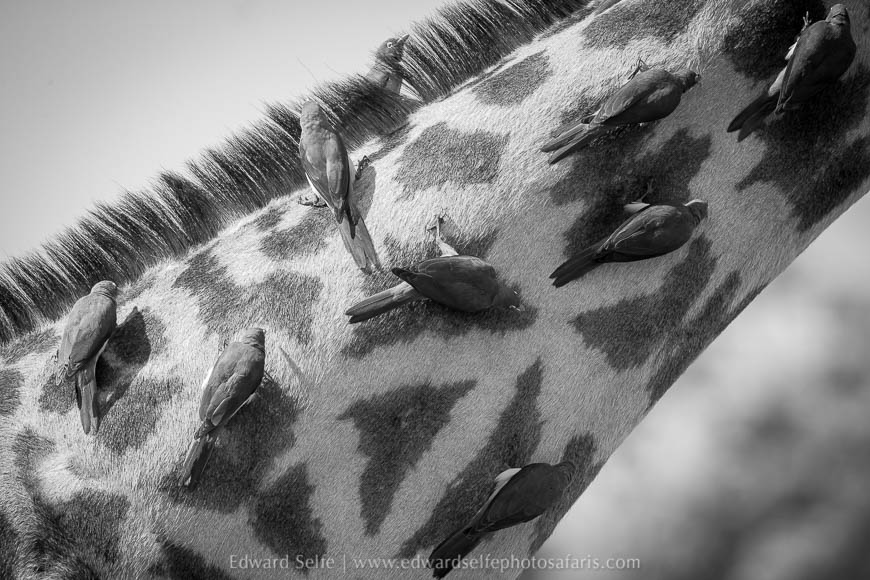
That afternoon, we explored further north, keen to make use of the superb light that we get each evening. That day was elephant day and we spent most of the afternoon with a couple of herds as they moved through the trees and then crossed in front of the sunset.

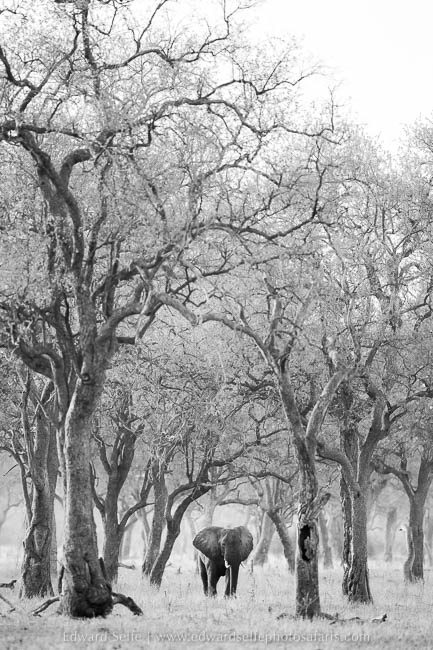
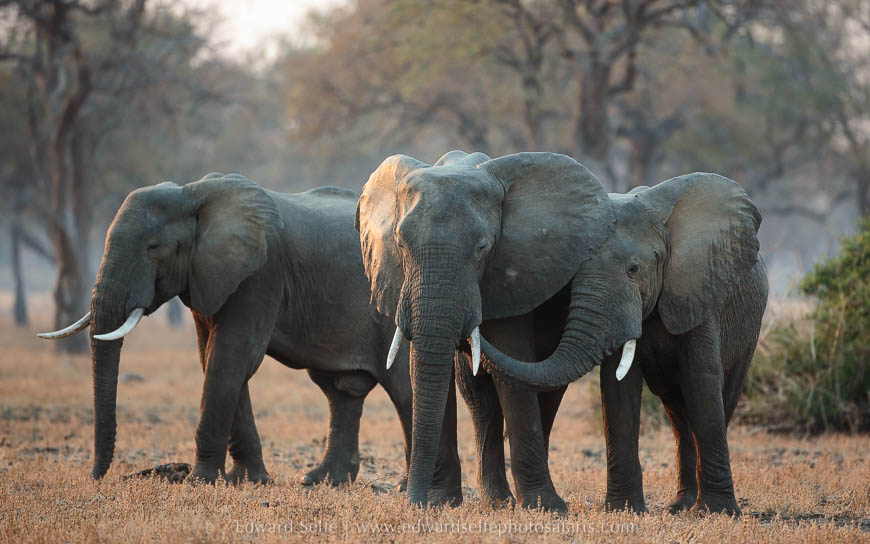
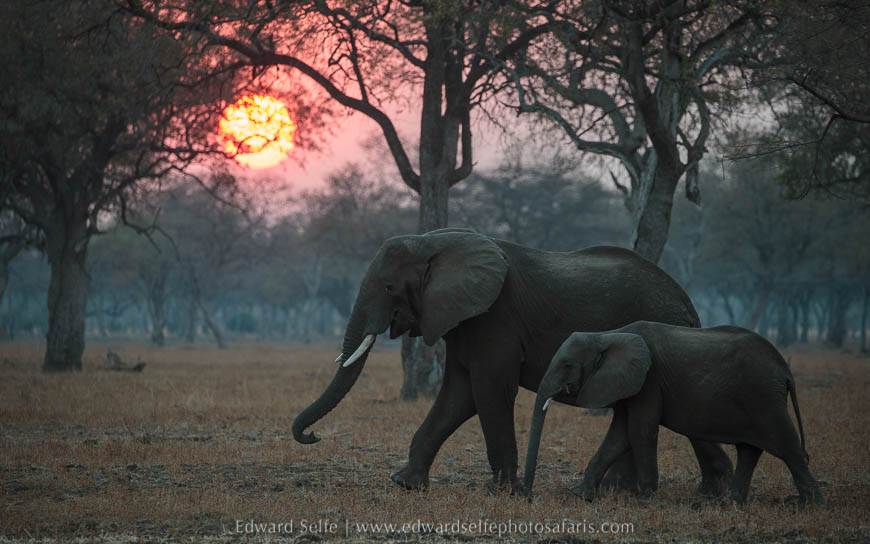
Returning to the camp, we found a second pair of mating lions – in the end there turned out to be 3 pairs! – so we worked on side lighting with the light from our other vehicle.
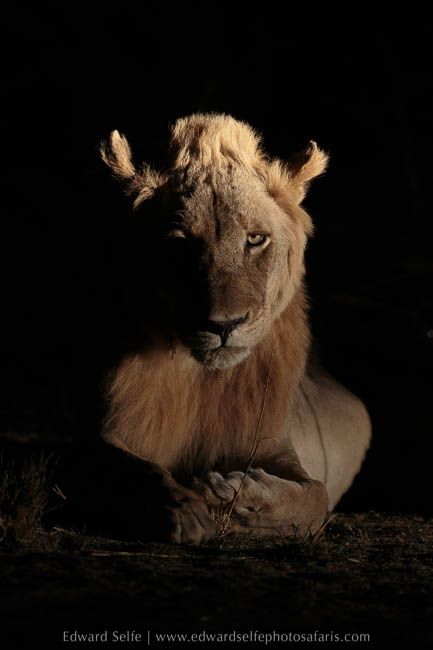
Over the next couple of days, we made use of the excellent area around Luangwa River Camp, and I coached and challenged my guests to work on their technique, try new things and critique their own images. I was really pleased that all of them were already taking excellent images, and making the best of the opportunities that I was able to give them. We had sunrises (requiring exposure compensation), animalscapes (requiring focus-and-recompose skills), animals on the run (offering panning blur chances), low-level shooting (by sitting on the ground when appropriate) and interesting night-time sightings (where we were able to alternate our two vehicles’ lights to create interesting effects). There was also action in the form of lions feeding on a buffalo carcass, birds in flight and a morning spent tracking down a large male leopard who I eventually found nestled deep in the leaf litter. Luangwa River Camp was outstanding and a superb introduction to the Luangwa for my guests.
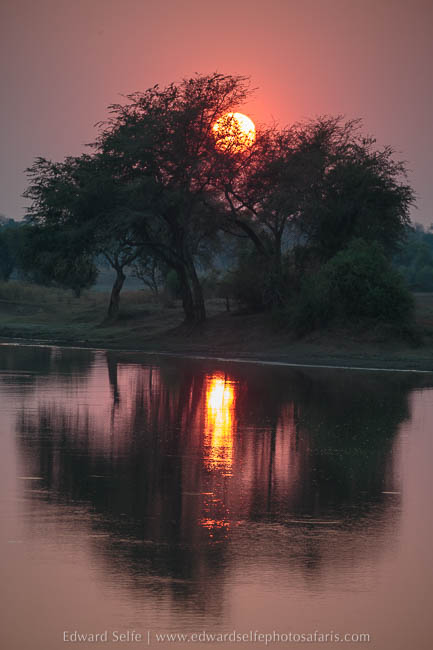

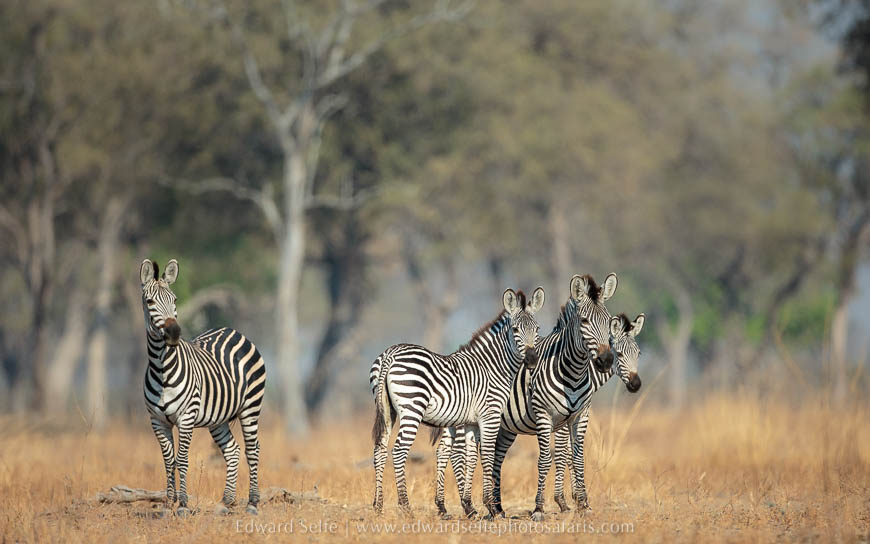



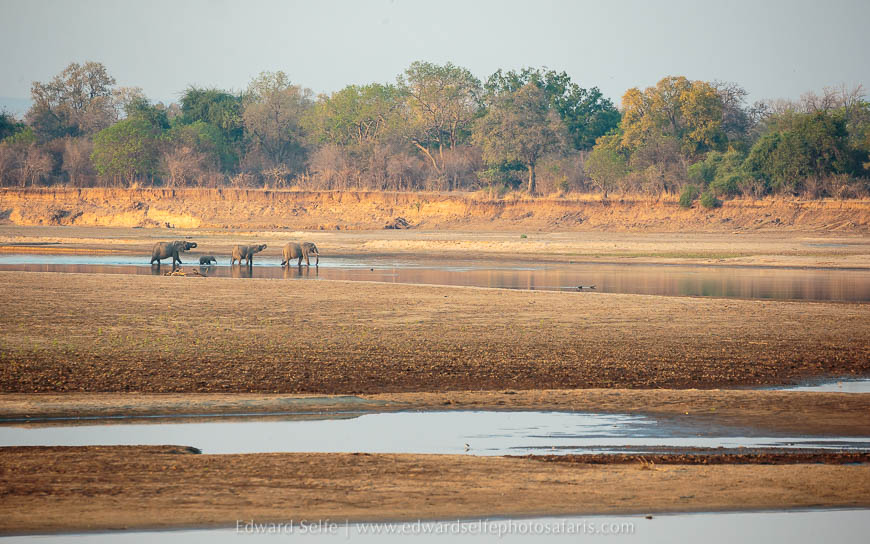


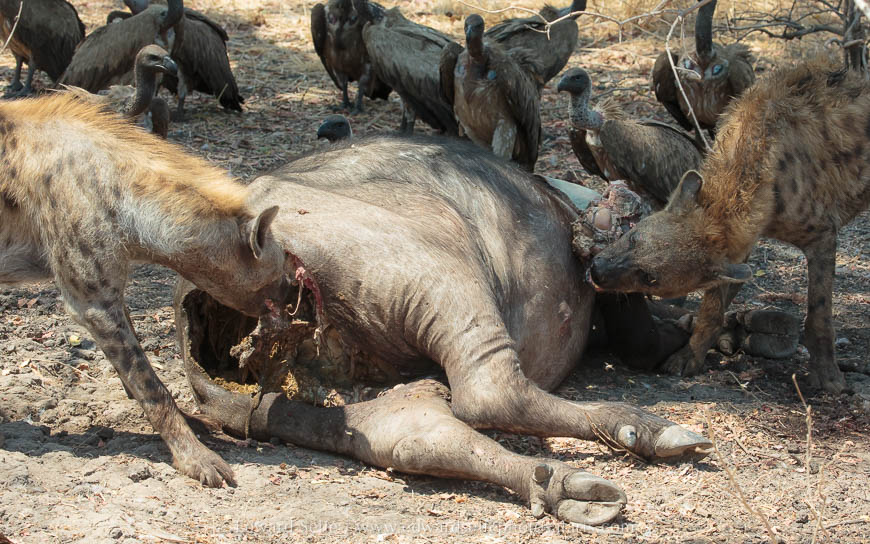
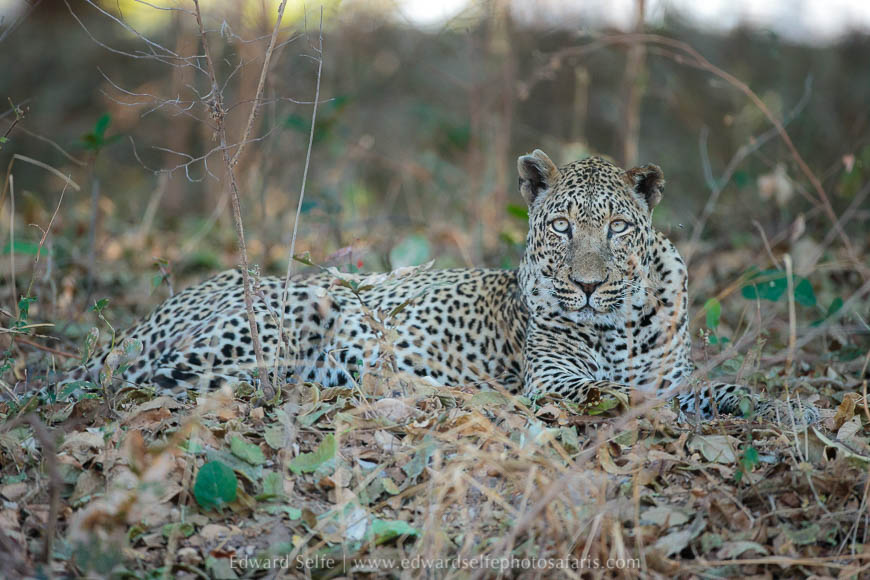
After 3 days, it was time to head to Nsefu Camp. While River Camp had been excellent, I knew that the Nsefu Sector would give us some really special sightings. After so many weeks spent in the Nsefu area, I know each road, every loop and all the best spots to find great sightings. Our first afternoon, we had barely gone 20 minutes when squirrels led us to a leopard snoozing in a sausage tree!!
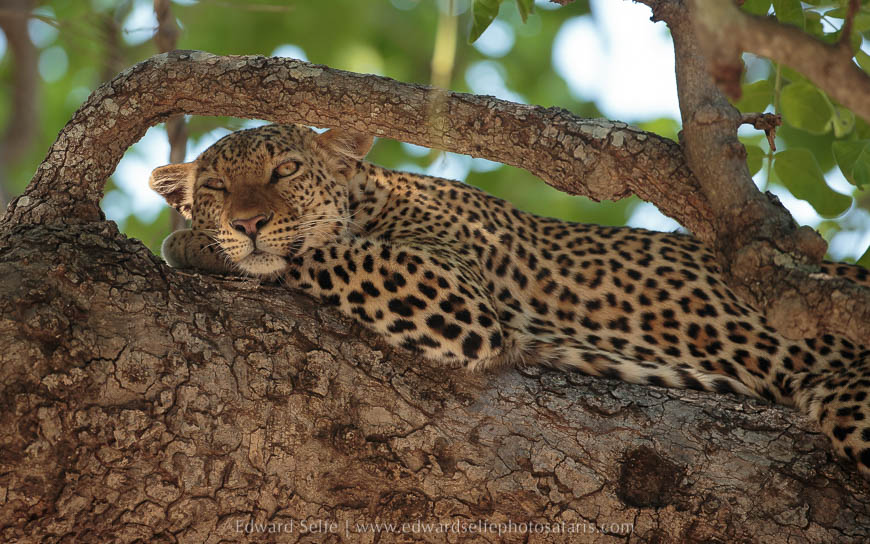
This set the tone for what continued to be a big-mammal and big-cat safari! Day-after-day, incredible encounters followed on from each other, with plenty of photographic opportunities that will forge lasting memories for the group.
After leaving the leopard in the tree, I headed to the Stork Colony where I hoped we might track down the lions in Luangwa Wafwa or Olimba the famous leopard who has given so many visitors to Nsefu a wonderful experience. Arriving in the Stork Colony, my heart jumped as I could see pukus and impalas alarm calling at the corner of the main gully that runs through that area. Olimba must be hunting in the channel! Driving over, advising my guests over my shoulder to check their shutter speeds for the light was dropping, I was astonished to find the well-known leopard standing over the carcass of a moments-old impala kill!
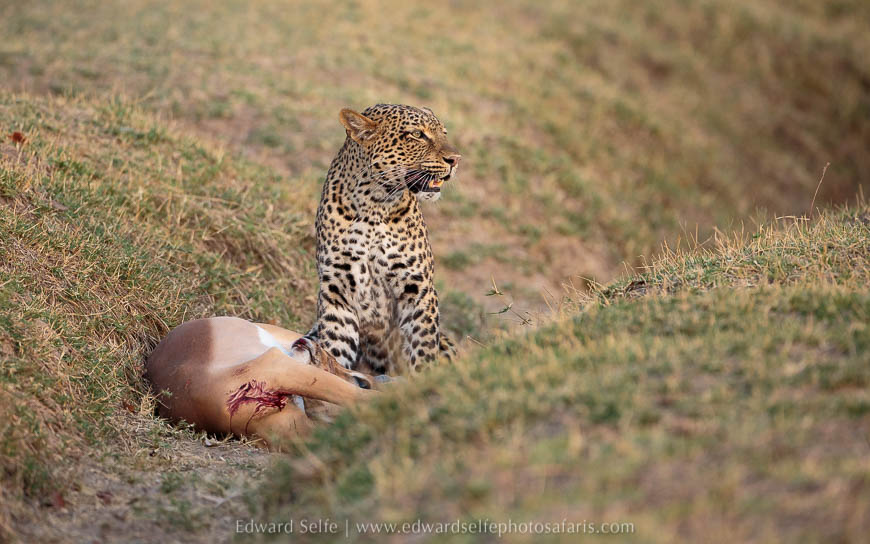
What followed was nothing short of exceptional. I knew that she needed to get the carcass out of the gully and into a nearby tree to protect it from marauding scavengers such as lions and hyaenas. The tricky challenge for her was that there were few nearby trees! The nearest bush was around 100m away, and there were trees 250m away….but in the end, she dragged it nearly 600m to a mahogany tree where she knew she could hoist it up, away from scavengers.
This gave us lots of chances to move carefully with her, positioning ourselves for low-level, intimate views of her with her prize but to avoid blocking her path at all. One of the guests asked why she would drag it so far; I believe that she knew the tree she was heading for, and knew that it would be a safe place for her and the cub to feed. Keeping the carcass complete contains the smell from the grass in the gut, so she dragged the full weight rather than breaking it open and removing the intestines to reduce weight.
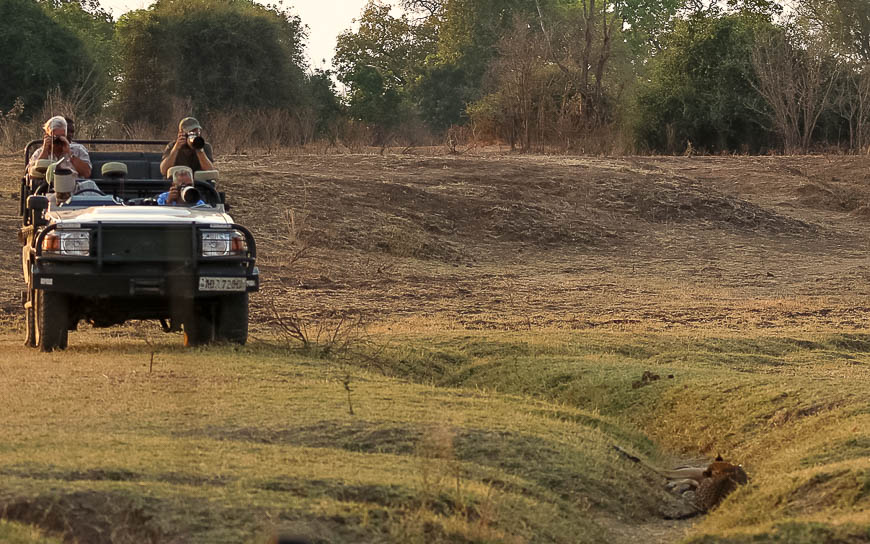



We knew that shining a spotlight on her would attract attention from unwanted dinner guests, so we left her at sunset. Best case would be that we would find her feeding in the tree with her cub in the morning and we didn’t want to do anything to jeopardise our chances or, more importantly, her chances of securing her meal.
We left her in peace, and returned to camp exhilarated to have started off so well at Nsefu. In fact, I had to explain to my guests what the lead up to that kill might have been – so often we see the hunt, and rarely a successful kill, so I filled in the preceding part of the story on the way home. I remember that at this stage, one of the group asked if this was a particularly remarkable trip. The answer; well, yes, but actually every trip that I have ever run to Nsefu Camp has been extraordinary; read back over some of my past reports to see why.
We left camp early the next day after a delicious super-quick breakfast by the team at Nsefu Camp. Arriving in the Stork Colony, we found an old male leopard retreating from the carcass in the tree. Olimba was at the base of the tree….but what about the cub!? Moving carefully, we spotted the cub, bouncy and excited, nearby his mother and enjoyed watching them play, feed and climb around the mahogany tree where Olimba had stashed the carcass. Clearly, much of the carcass had been eaten, but there was still plenty to keep the cub happy!


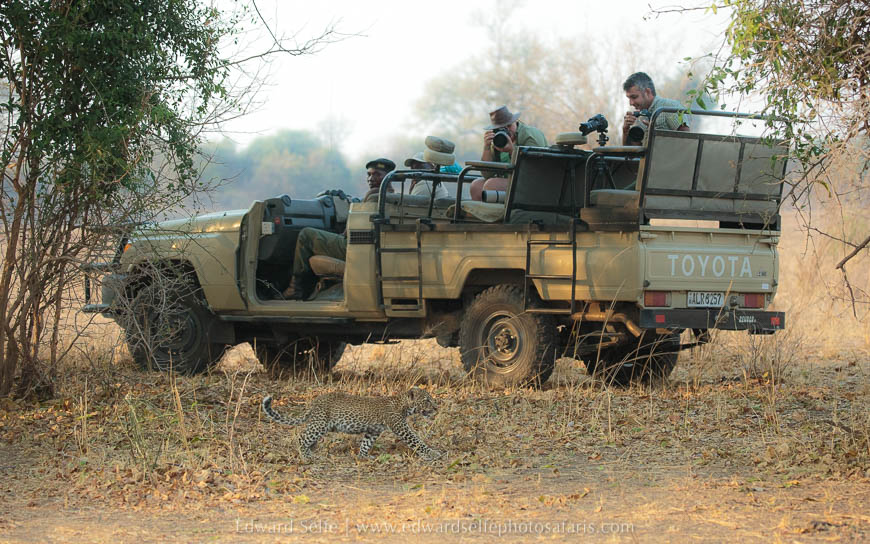
It was hard to know how to follow that, but we quickly found a large herd of elephants against the trees of the stork colony and spent time talking about how to make images that could later be stitched into a panorama.


In the afternoon we decided to head south into a new area, hoping to catch up with the Nsefu Pride, or a pack of 7 wild dogs that had been seen in the morning. In search of the dogs, we came across a small group of bull buffalos in superb light and two of “the Punks”, the male lions who normally patrol the western bank of Luangwa. They had been displaced by the activities of 4 young males who have been throwing their weight around on the Lion Camp side of the park – I hoped we would see them when we moved to that area later in the week.
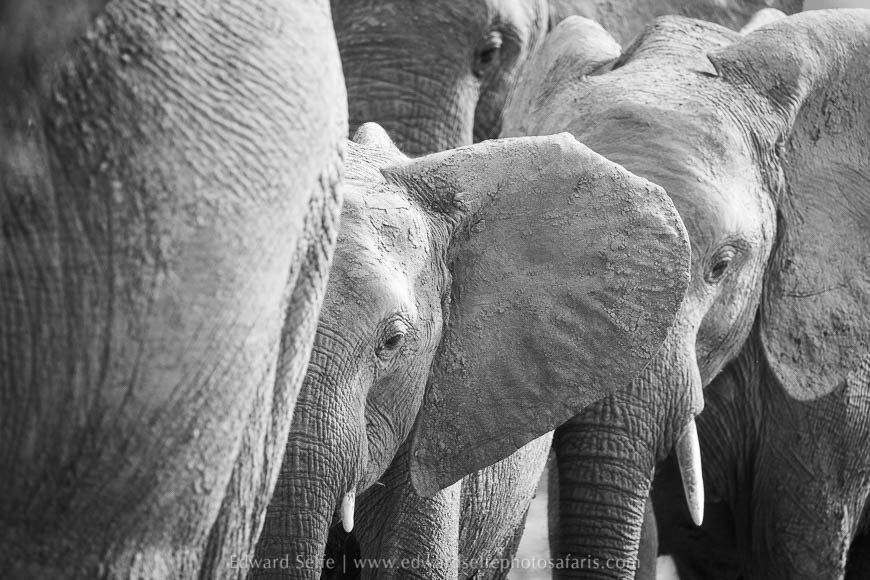

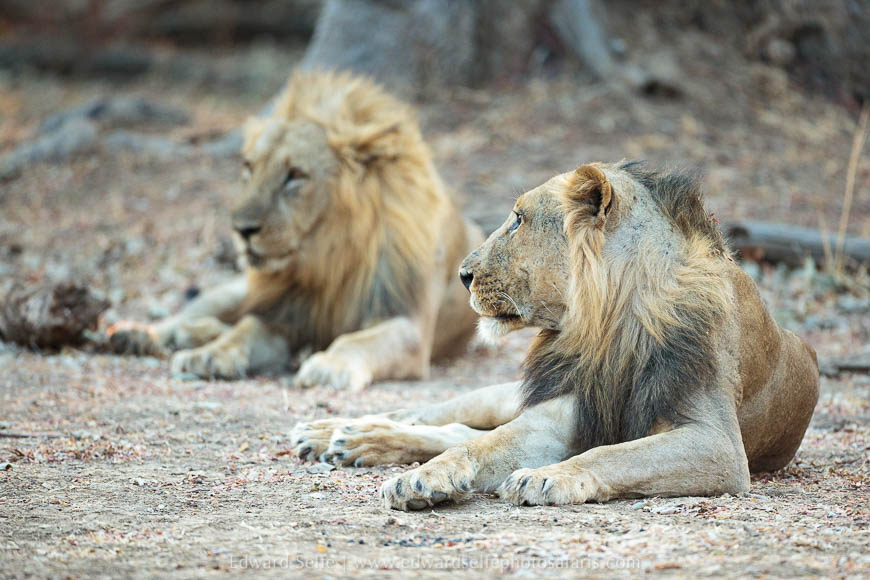
Eventually, the wild dogs were tracked down, and we found them just as they began to move and start hunting. The light was low, so I prepared everyone to create panning blur shots using a slow shutter speed as the dogs ran across in front.
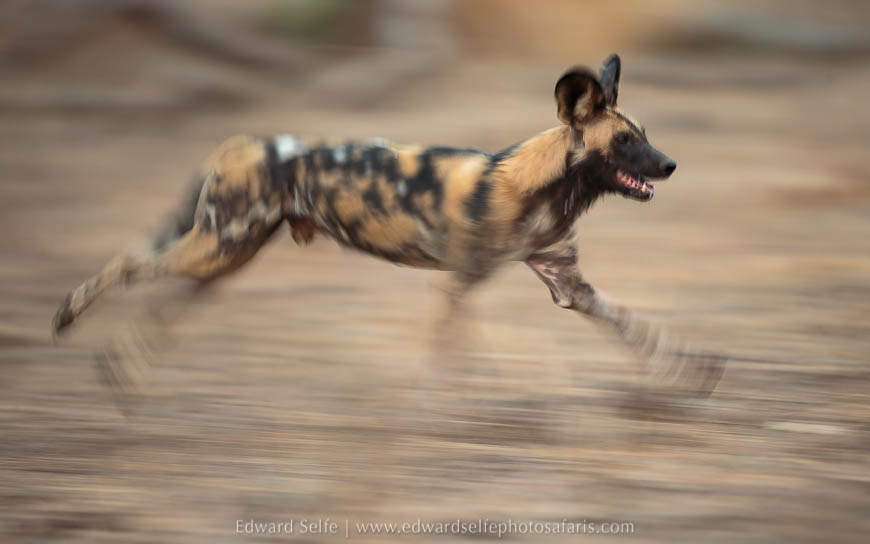
They were clearly hunting, with serious intentions, so we followed as best we could on the roads through the thickets. Soon after, just as the light was failing, we caught up with them again as they rushed down into an ebony grove. 2 of the dogs had caught an impala and the rest were just arriving to feed! Nothing can prepare first-timers to the drama, dust and energy of wild dogs feeding; over the next 30 minutes, the dogs rendered the impala down, leaving only skin and bones at the end. 5 of the dogs consumed most of the carcass and 2 dogs were sidelined; it seemed that they were outsiders hoping to join the pack and had not yet been accepted.
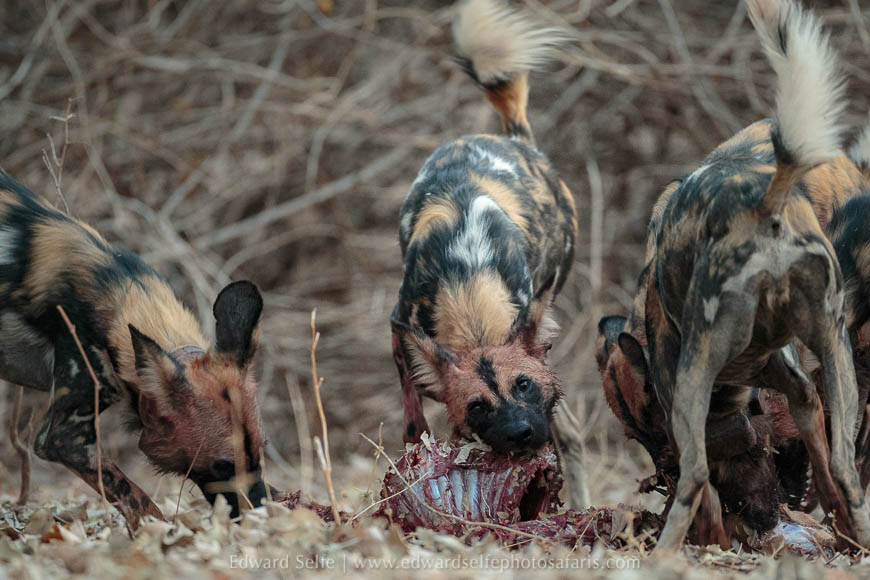
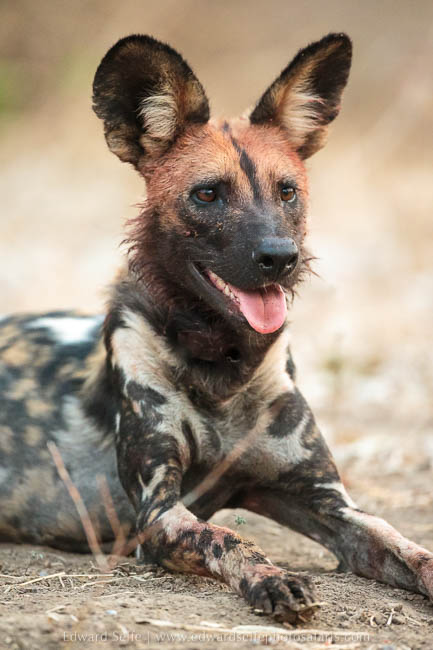
This had been truly exhilarating, so we stayed with the dogs until total dark and then headed back to camp to share stories and prepare for an early start in the morning.
The next day was one of our best on the whole trip! Leaving camp early, I picked up the sounds of impalas calling and we found the “Nsefu” leopard (who is often found around camp) patrolling through the bush. We followed her for about 30 minutes as she scent marked and patrolled. Eventually we left her in the branches of a thick tree.

We then enjoyed some wonderful elephant crossings, and shortly afterwards found the males and a couple of females from the Nsefu pride resting on the banks of the Crocodile river. Nearby, unbelievably, a leopard was waiting to drink from the waterhole where the lions were sleeping, so we watched as she nervously approached the water, stole a drink without disturbing the lions and melted into a cave under some tree roots! This was our 9th individual leopard in 5 days…
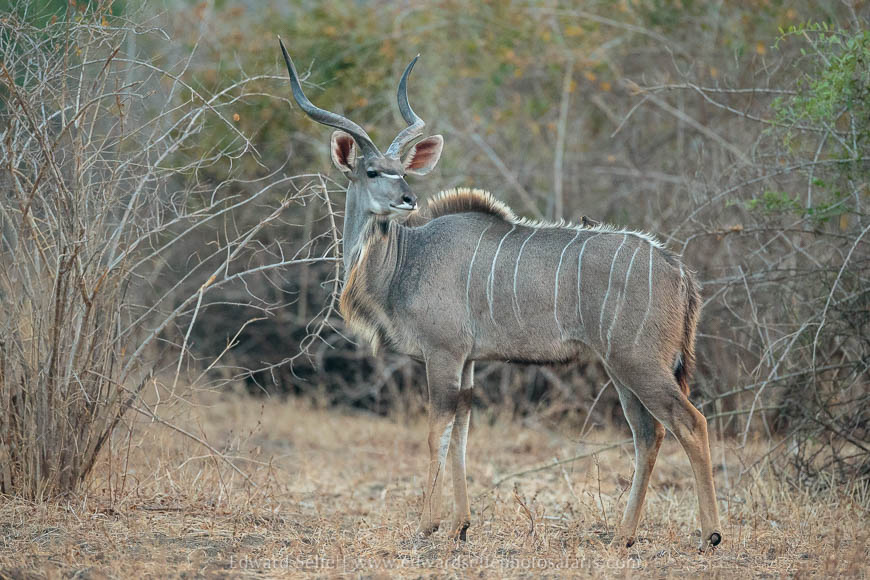
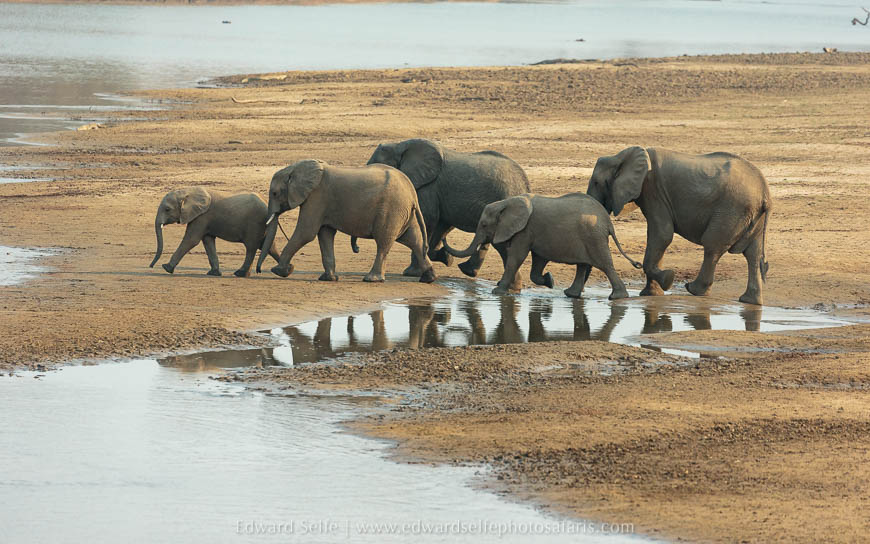
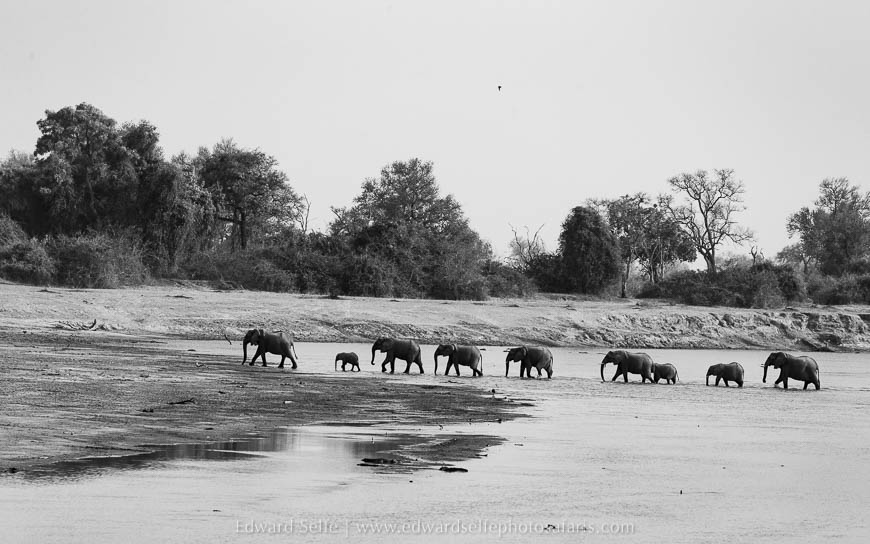

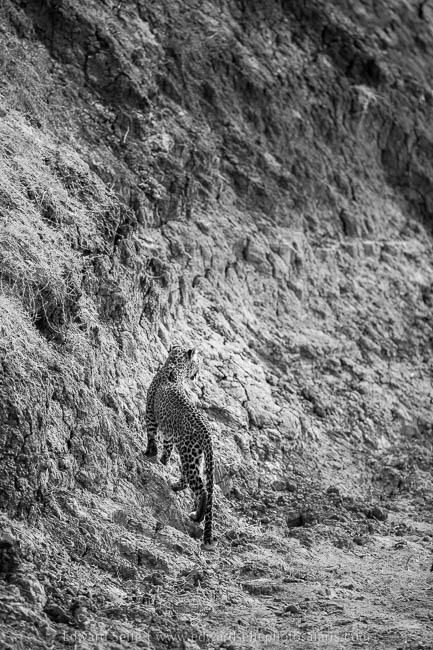
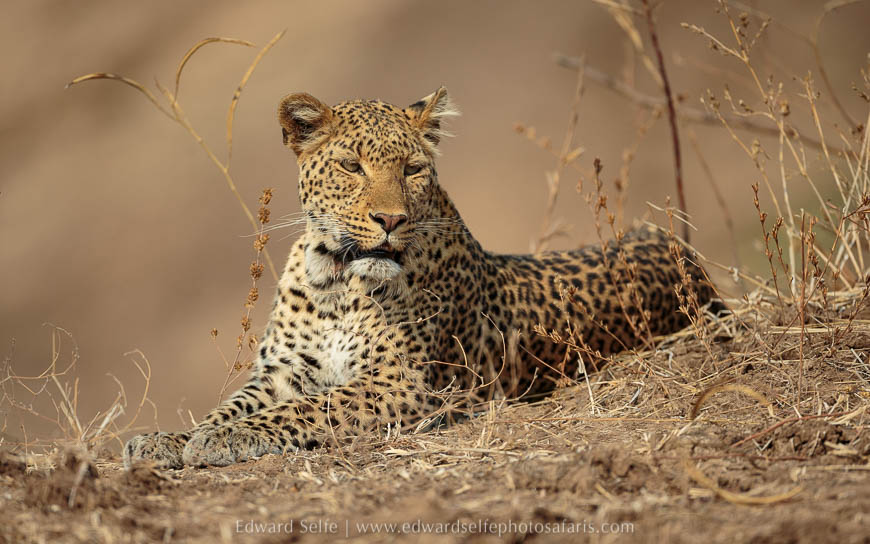
I hoped that the lions would be more active in the afternoon so we headed back to where they had been resting. On the way, we checked on the Nsefu leopard and found her in a stunning spot on the branch of a large Ebony tree! We took some shots and left her in peace…..when you find a leopard in such a position, and get the best photos you could hope for, why bother her for any longer.
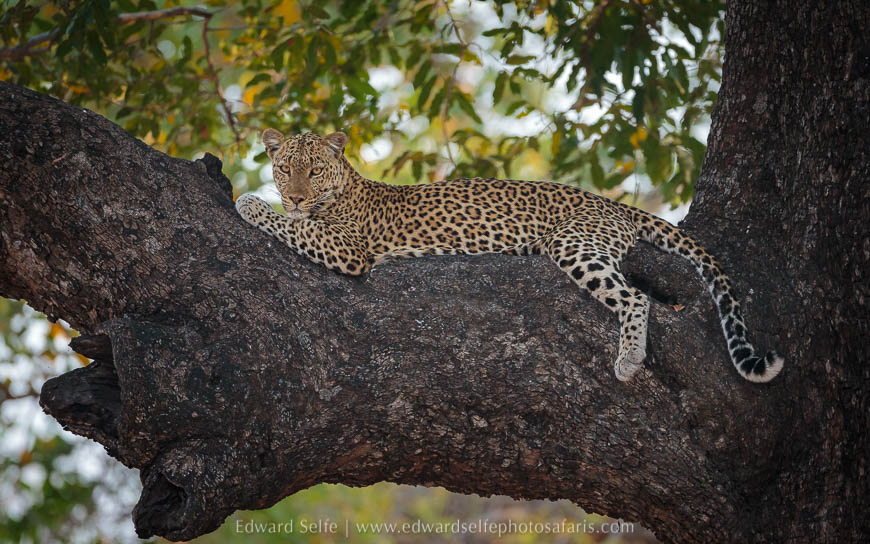
The lions were characteristically inactive, so we looked elsewhere and located a herd of giraffe with a massive number of oxpeckers on their hides. This provided lots of fun as we tried to create unusual and interesting shots of the shapes and abstracts that this offered.

During the afternoon, Chimwera, Olimba’s previous cub, had discovered the remains of the impala carcass that Olimba and her little cub had now abandoned. Chimwera was forced to fend for herself earlier than many leopards since Olimba had a new litter within 18 months of Chimwera’s birth. The youngster is more than capable of hunting and feeding for herself, but a higher percentage of her diet is made up of smaller prey – like the juvenile storks from the colony nearby – and from scavenging. When we found her, she was feeding on the dry skin of the impala and the light was poor. But returning in the night with our second vehicle, we spotlit for each other and made some excellent side-light shots!


Returning to camp, we were shocked to find Olimba’s little cub heading alone to a waterhole in the Crocodile River. We were cautious with the spotlight and lit him for a few moments to take some photos and then left him licking his paws on top of the bank.

If there was anything that we had lacked in this trip (which had already been exceptional!) it was perhaps a good sighting of lions. I decided to head to the Crocodile River the following morning where the lions often relax during the day. Within a short time, we had found the whole pride! 2 adult males, 6 females, a 1-year-old cub and 5 younger cubs were lying around on the open ground. Hoping that they would start to move when the light improved, we waited. It didn’t take long before the cubs got restless and began to play with the adults. But it was when they started to play together that the action really intensified.
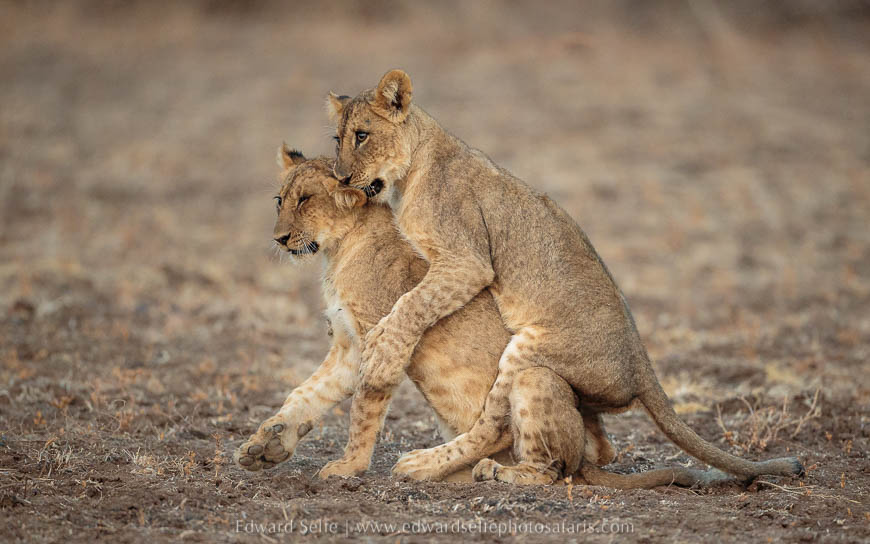
Over the next 45 minutes, they played non-stop, rolling, rugby-tackling, ambushing, dog-piling and tripping each other up. I don’t take large numbers of photos normally, but I took over 1000 shots this particular morning! In between the playing, the females posed on top of the banks, keeping an eye on the youngsters below.
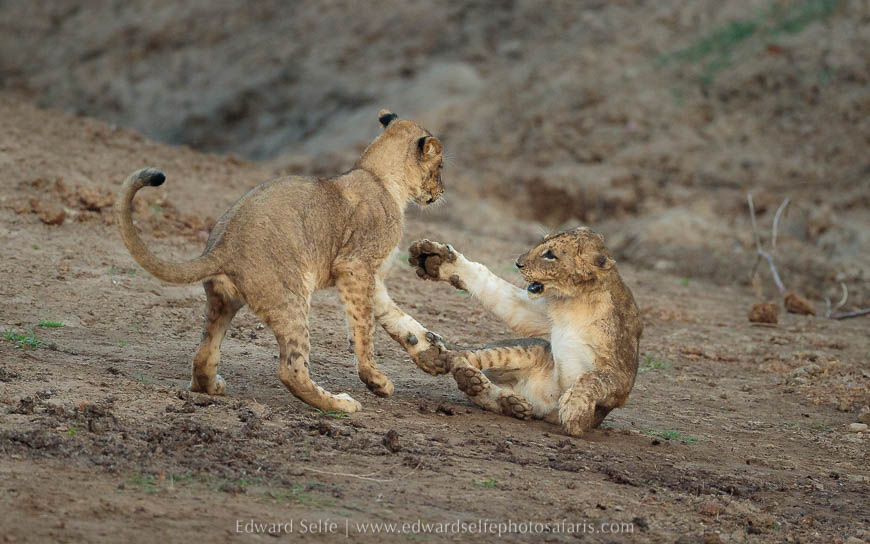

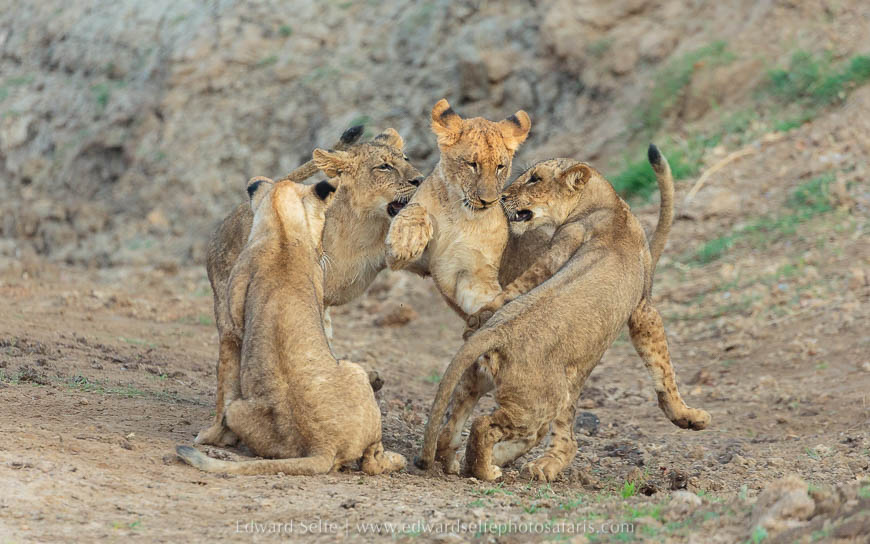

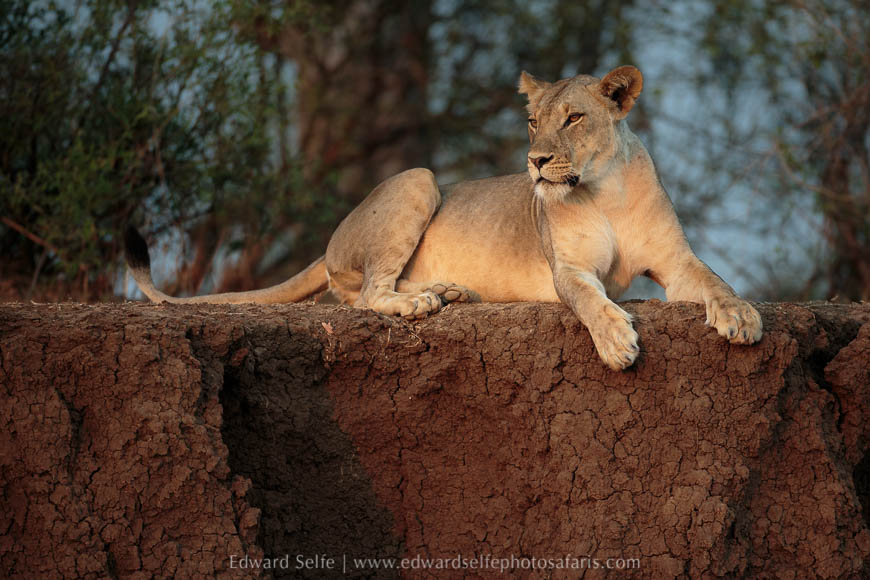
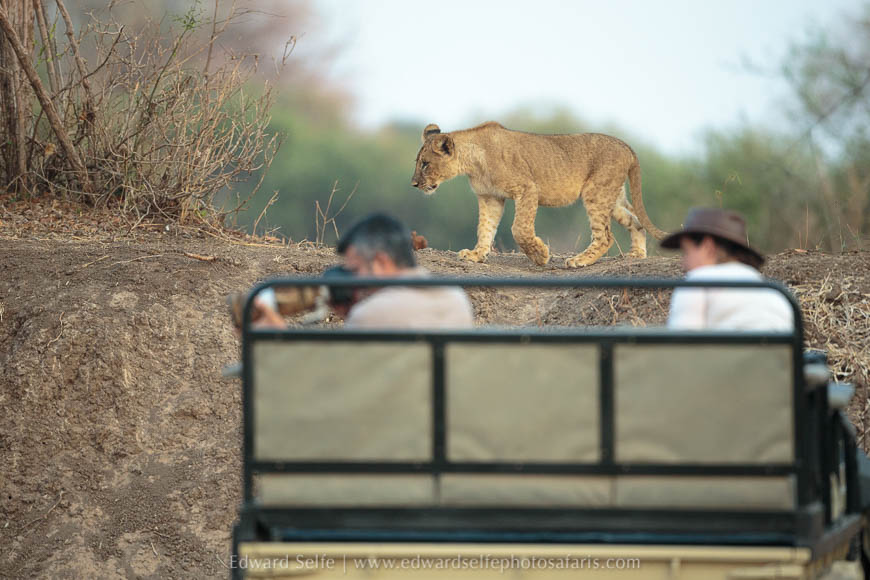
What a morning we had with the lions. With the best of the usable light taken up with lion cubs at play we headed to the elephant river crossing point and had a coffee-break while watching herds of elephants coming to drink.
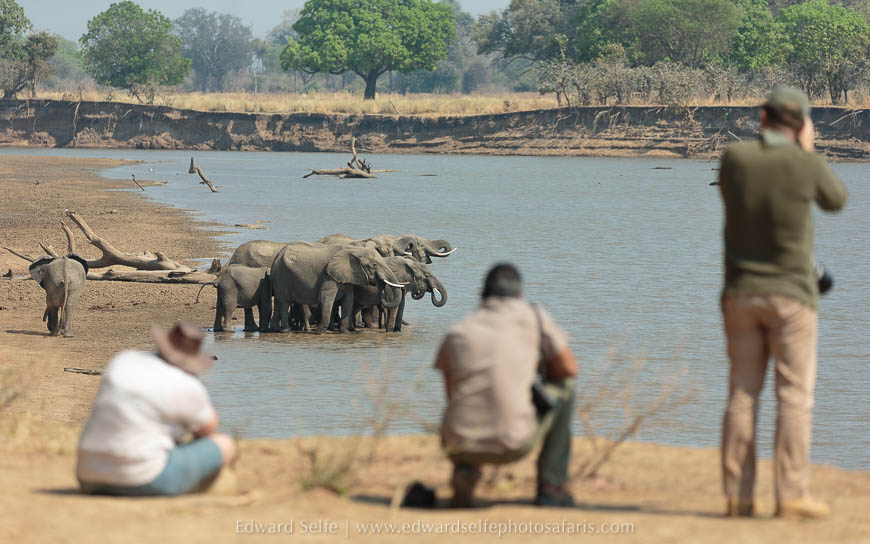
That morning, Nsefu Camp laid on a superb bush breakfast for us, so we retuned to camp late, and found an elephant blocking our route to the rooms….not to worry, we sat and watched as he fed and ripped branches off the nearby tamarind tree.
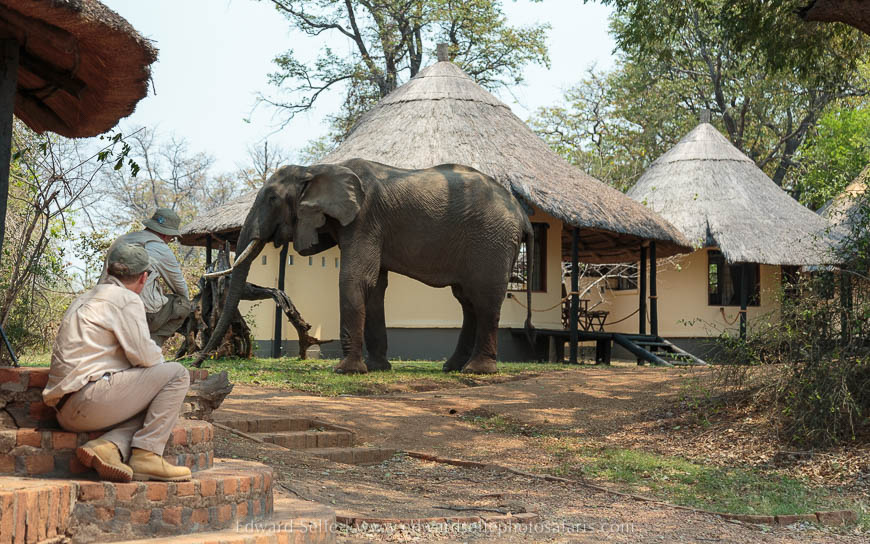
I decided to explore some new areas that afternoon, taking a chance on finding dogs (which are usually in the more remote areas) and knowing that we had excelled with lion and leopard sightings already. We photographed impalas in the stork colony, kudus in the plains and giraffes against the sunset – a relaxing and scenic afternoon after so much activity!
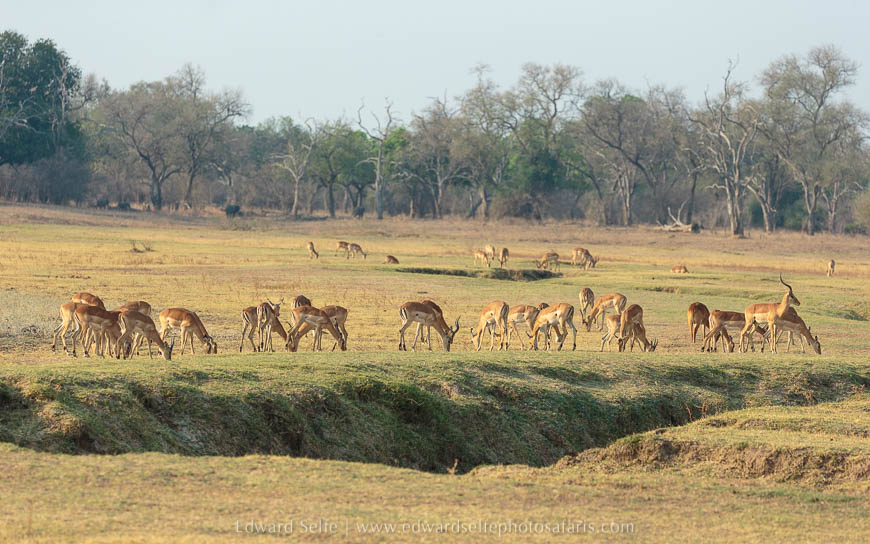
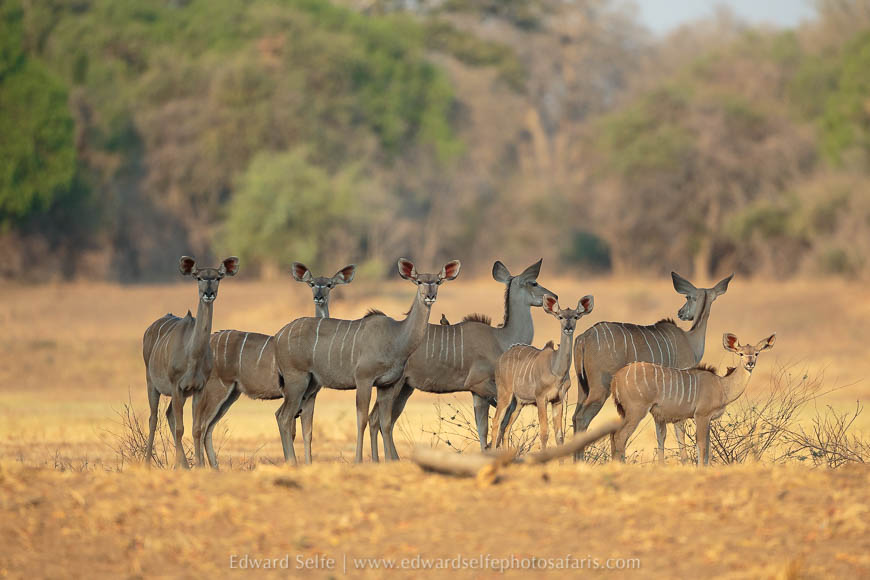

We all wanted to visit the Salt Pans in the interior of the park, so we decided to leave even earlier and visit that area the next morning. After a brief scout around to check whether Olimba was hunting in the stork colony, we crossed the plain and reached the marsh at the end of the spring. Moving slowly up the channel, we found vultures, saddle-billed storks and thousands of doves coming to drink at the waterhole. I hoped some buffalo would be drinking, but they were nowhere to be seen. We reached the head of the spring and watched a white-winged river tern hunting along the water and some hippos who had made a home in the warm water.
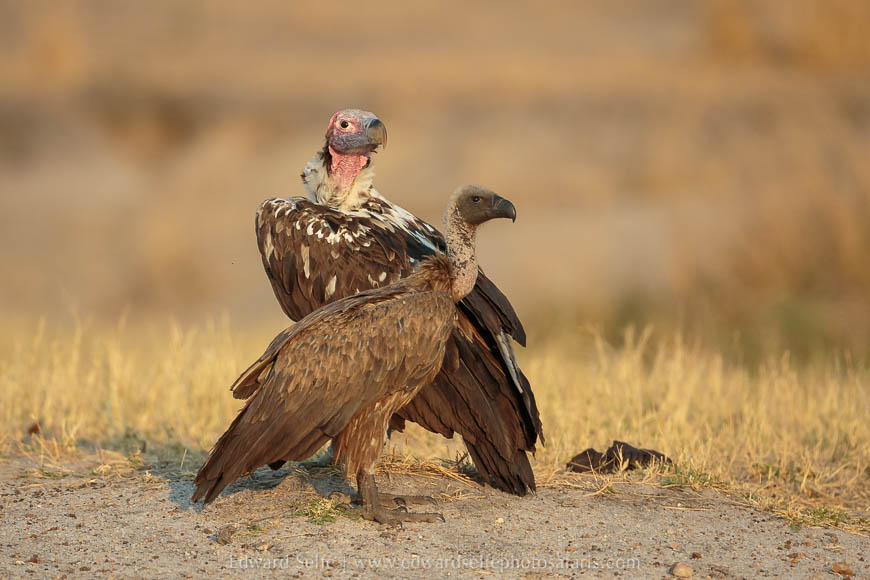
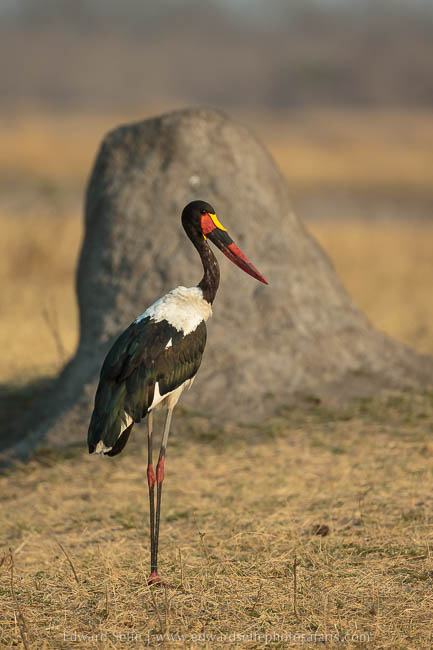
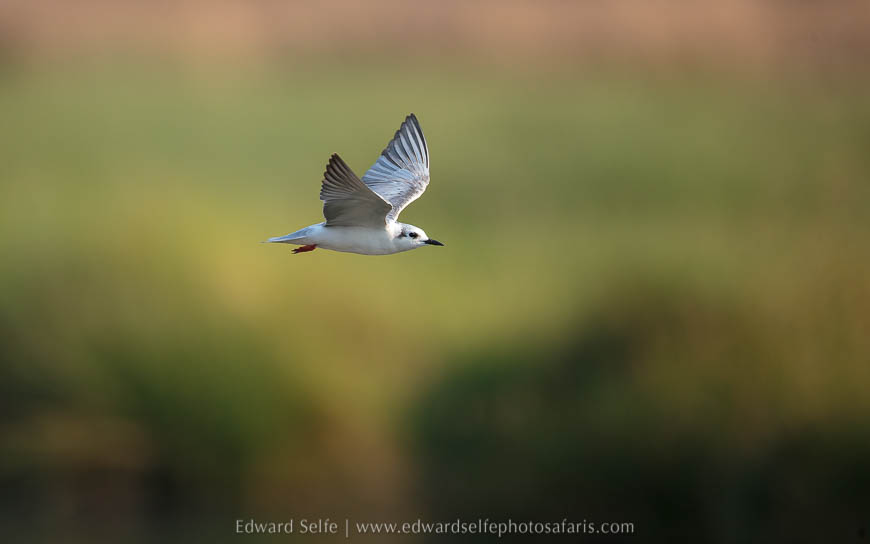

Turning around, I caught sight of dust in the distance and I knew the buffalo were on their way. We moved to intercept them and I positioned us for their arrival at the water. The first few started to drink, while more and more appeared over the horizon. When several hundred were already drinking all around us, a fight broke out between two bulls which caught everyone’s attention and caused several of the family groups to flee from the water hole. There was dust and noise everywhere!
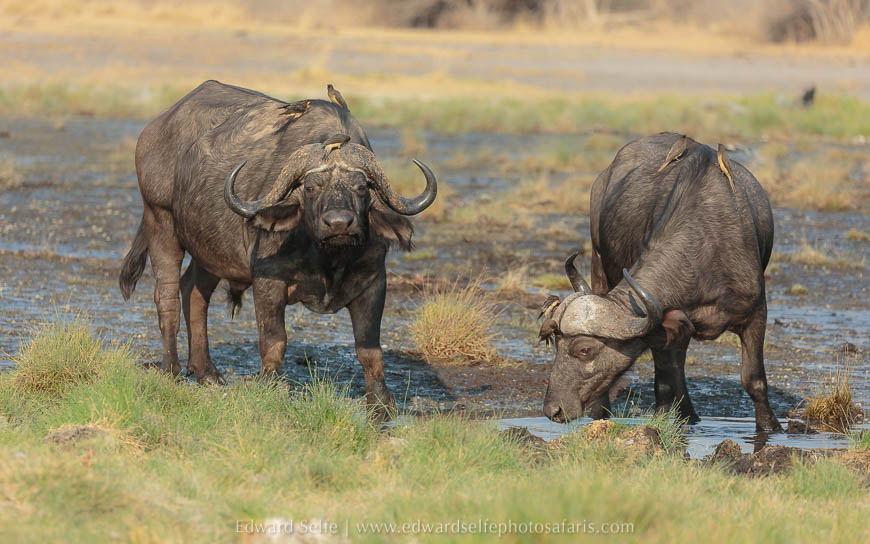
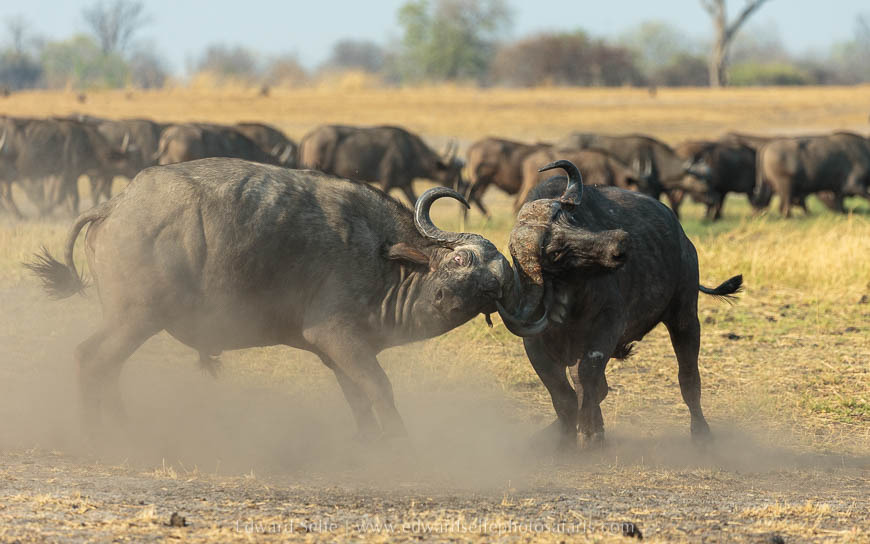



We spent the last half hour at the marsh, waiting for the crowned cranes to arrive, which they did in far fewer numbers than previous years which is concerning since they are highly sensitive to environmental change.

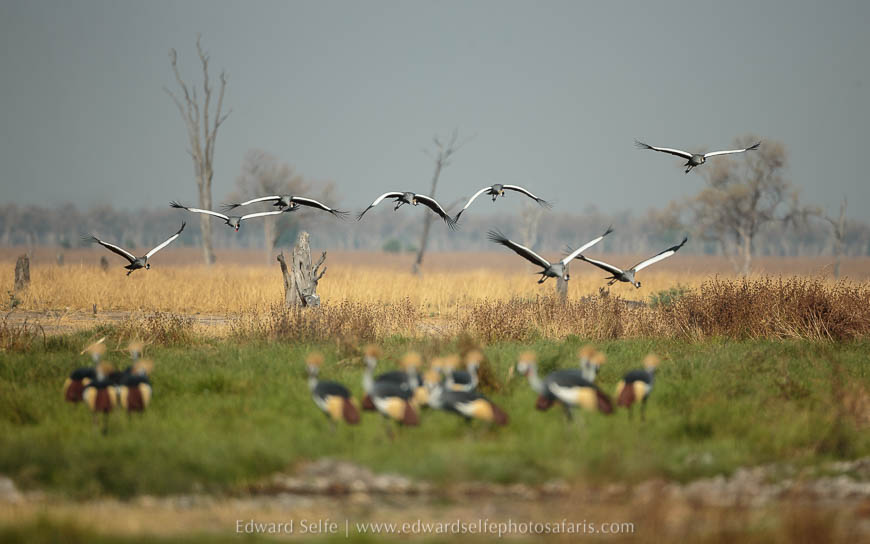
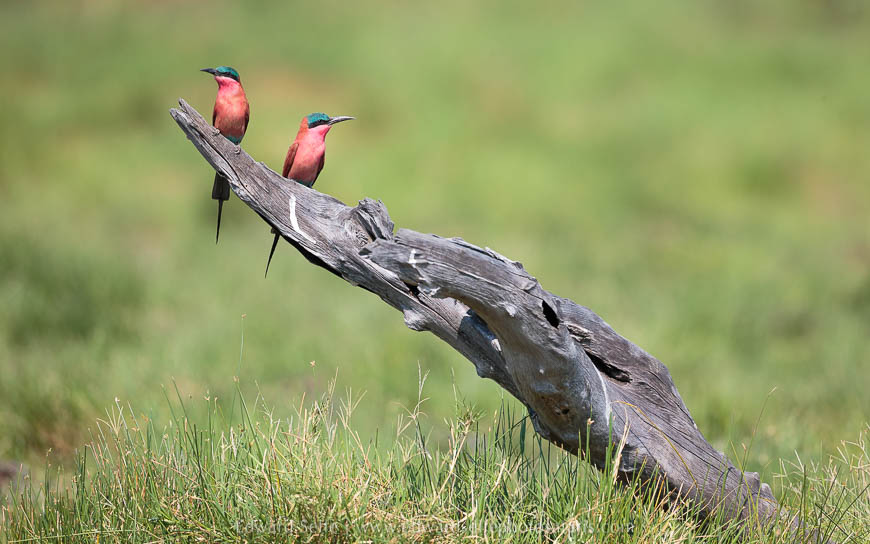
Heading south in the afternoon, we targeted a buffalo which had died in a waterhole. The lions were eagerly awaiting the spoils but a large hippo was holding them at bay. As we arrived, the hippo emerged and charged into the lions, scattering them everywhere! On our way, we found a pack of wild dogs resting in the shade, but large bellies confirmed that they would not be very active that afternoon!
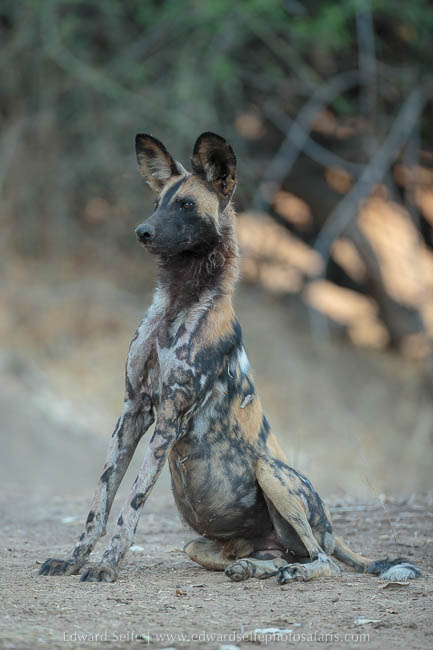
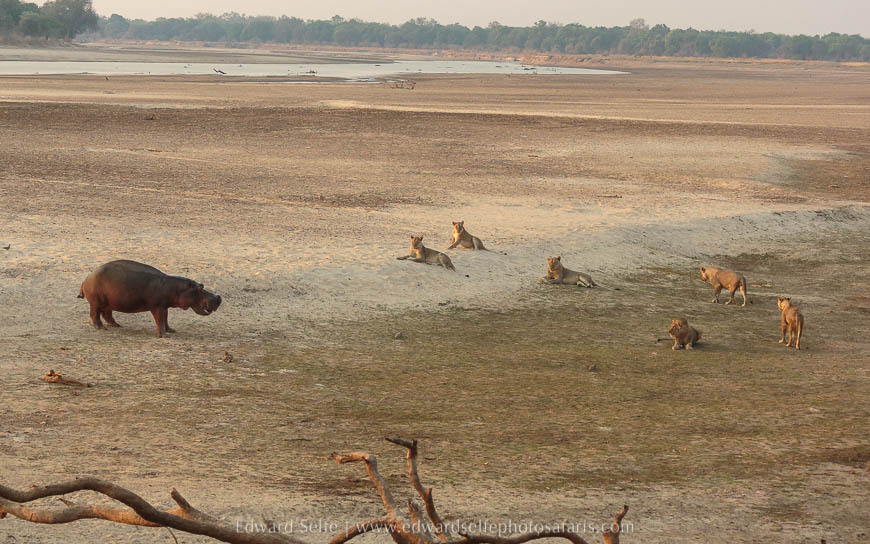

Our last morning was a stunning, leisurely outing. With so much already seen, the group were most relaxed about what came along. Such is Luangwa that this turned out to be a safari that would rival any in most other areas! We started photographing sausage tree flowers that had formed a carpet under a large tree. While there, I could hear puku antelope calling nearby and we soon tracked down some members of the Nsefu pride, resting in the grassland. They were not very valuable photographically, but it was good to see them again.

Before tea break, warning calls and info from another guide lead us to an impala carcass at the base of a large tree. It was partly eaten and the leopard was hiding in the bush nearby. Combining these two pieces of information, I suspect that it was Chimwera who had caught it; she is small, so unable to lift the carcass into the tree, and also shy during the day, so unlikely to emerge while we were watching. We left quickly to give her the best chance of returning and securing her kill before the hyaenas found it.
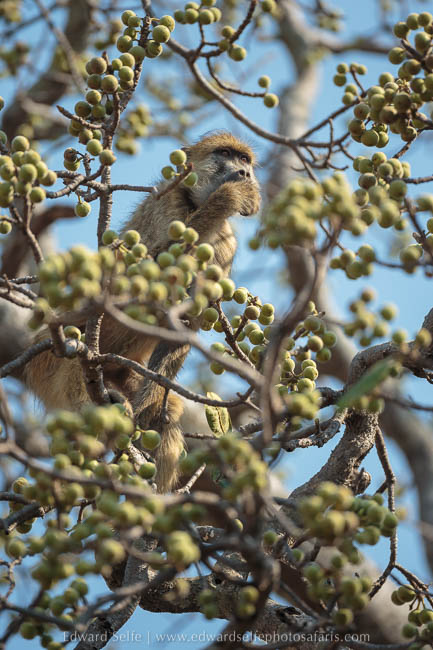
That was our last day at Nsefu Camp, so we crossed the river, and arrived at Lion Camp at lunchtime. I have always had a wonderful game experience at Lion Camp, and the new renovations take the camp to a new level of comfort. On arrival, the dambo in front was full of game, giving us confidence that there would be lots to see over the next few days!

I decided to head up to an area where we often find animals crossing the river on our first afternoon, knowing that it would also take us through some of Lion Camp’s stunning grass dambos. Kudu appeared immediately, and then giraffe and hippos gave us some great opportunities at the river crossing.

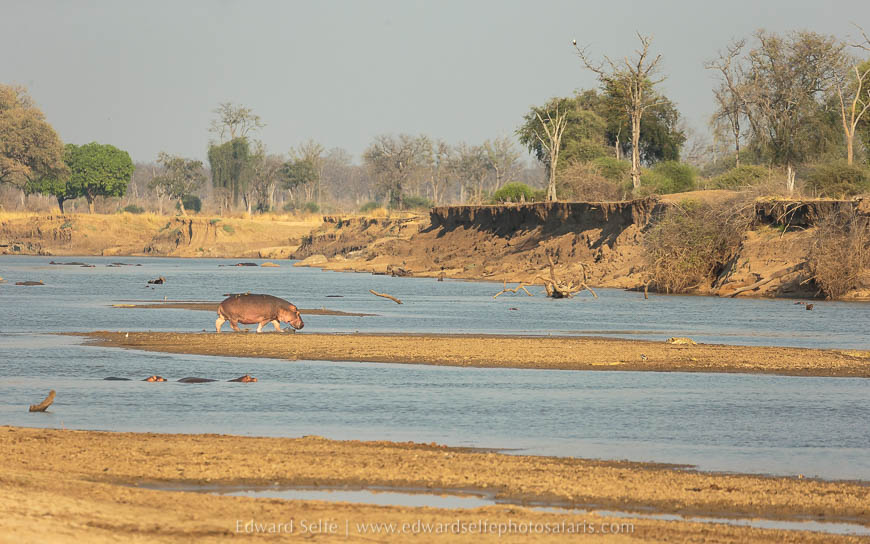
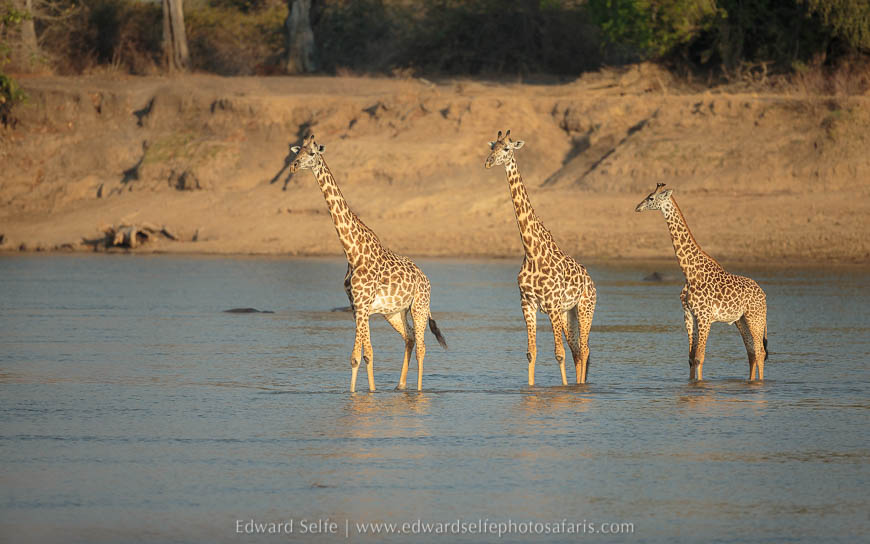
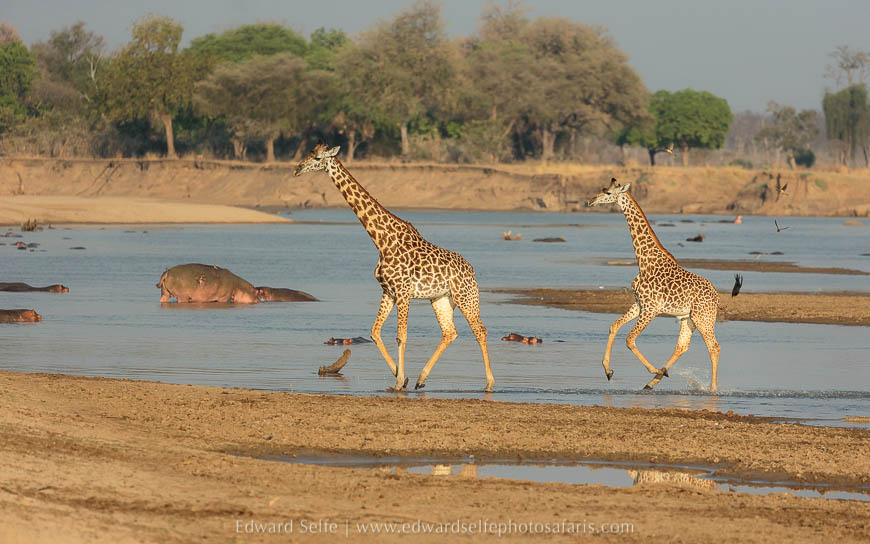
On the way into camp from the river crossing, we had seen 14 and 4 lions in two groups. As the sun dipped, we went in search of the 4 males who were nearby. They were just rousing and, sitting on top of a bluff, gave us the chance to be below them.
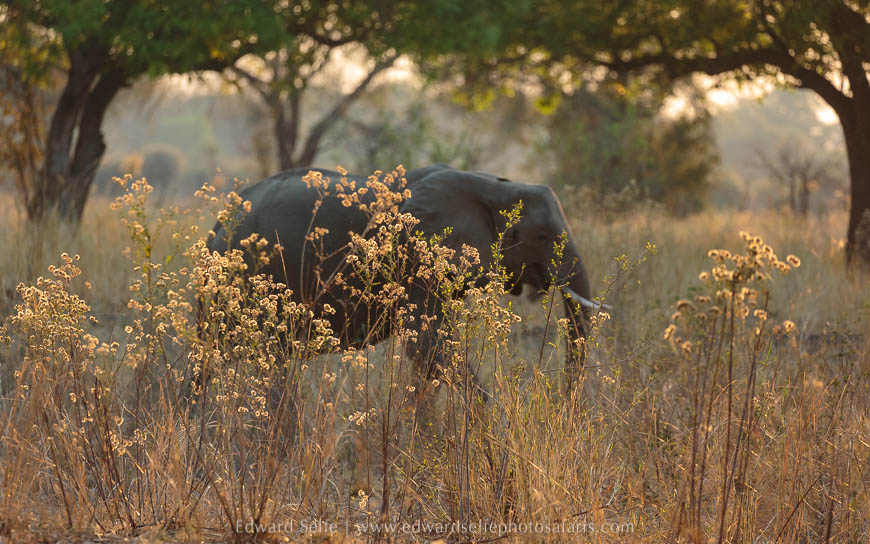
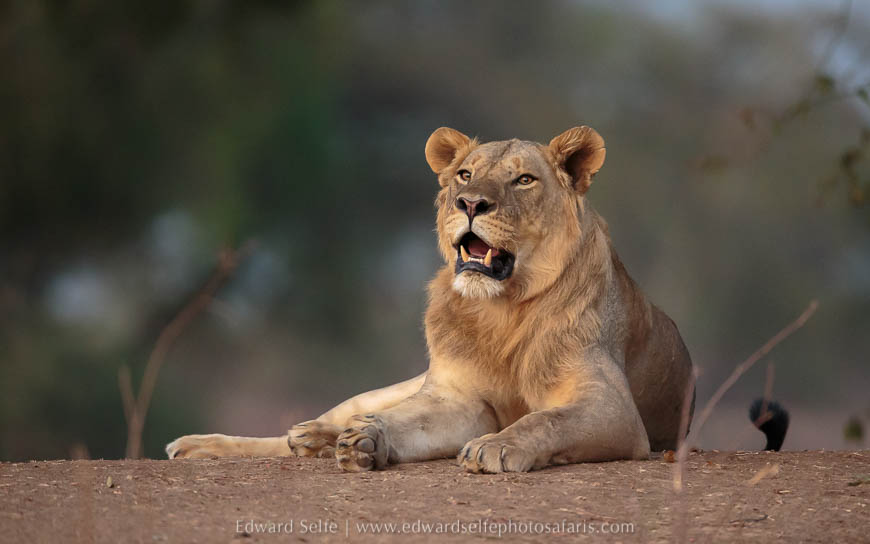
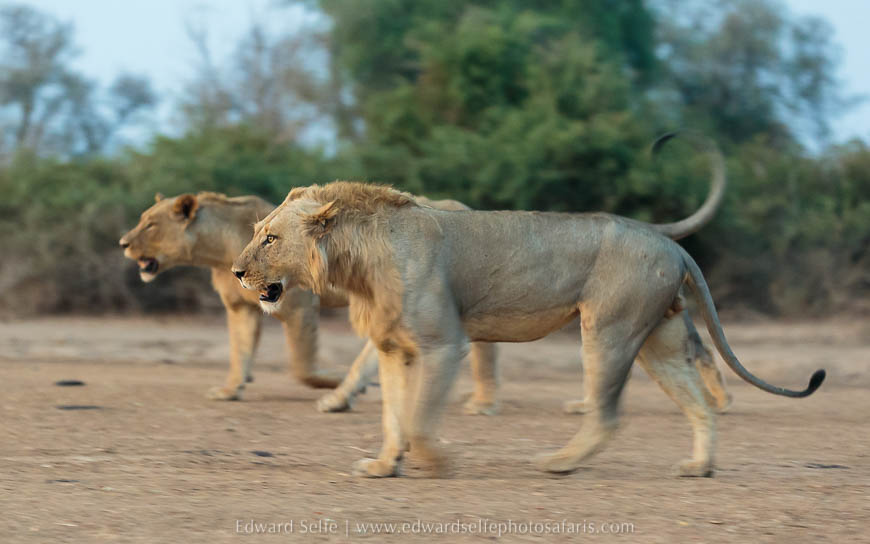
Knowing that there was a dead hippo carcass nearby, I watched them pick up the scent and walk purposefully towards it as darkness fell. They ousted the feeding hyaenas, but then turned their noses up at the stinking meat; apparently there is enough food available in the late dry season that lions don’t need to eat rotten meat!
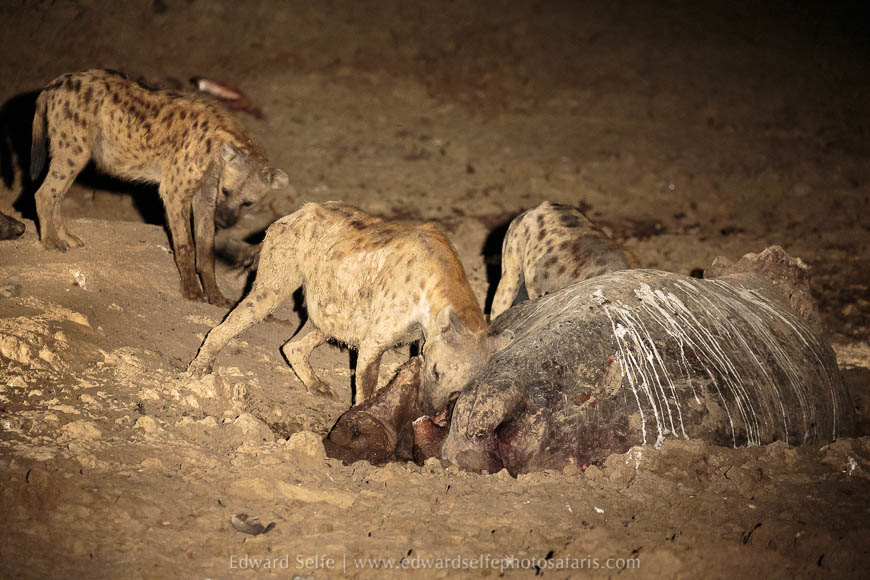

Amazingly, the following morning the lions were back where we had seen them the previous afternoon! They are very large males and have been patrolling widely, displacing other males and their prides, so it was surprising to see them back so soon! The light was perfect so we enjoyed low-angle shots of them as they surveyed the area. A coucal came to visit but quickly scampered away at the sight of the lions!
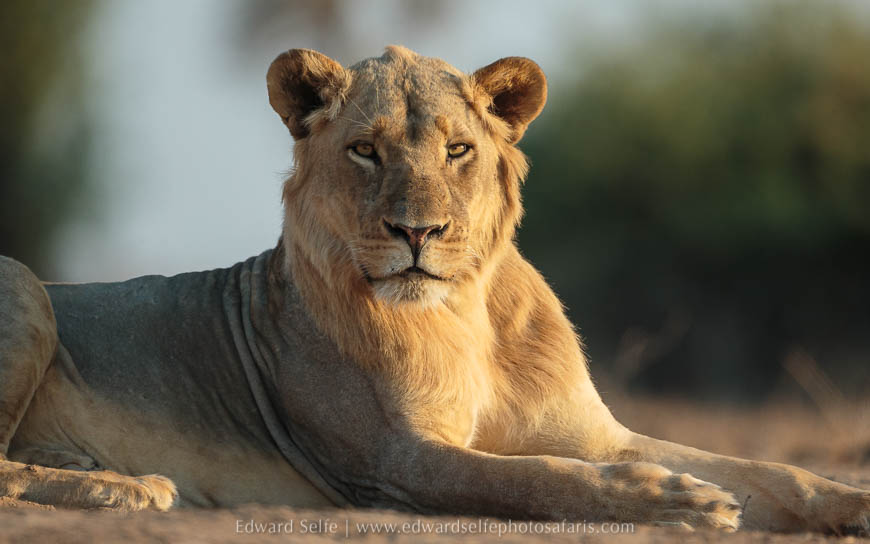
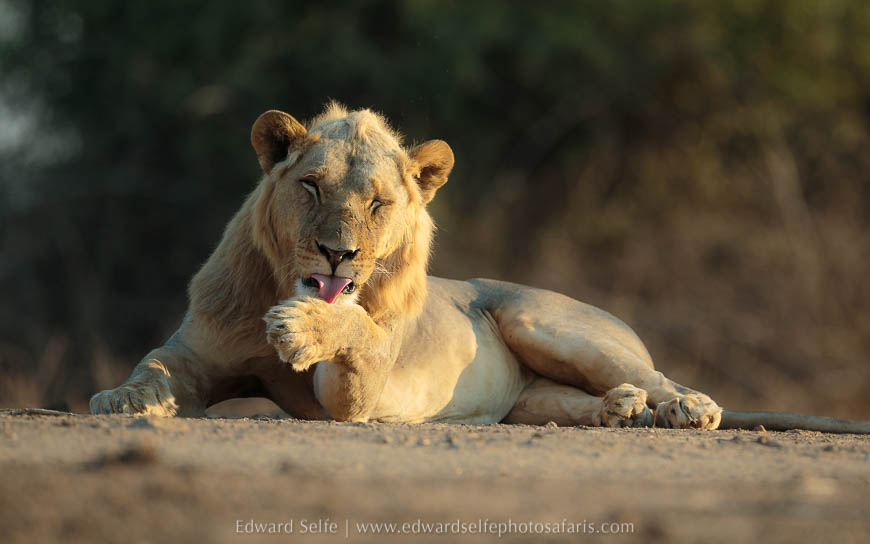
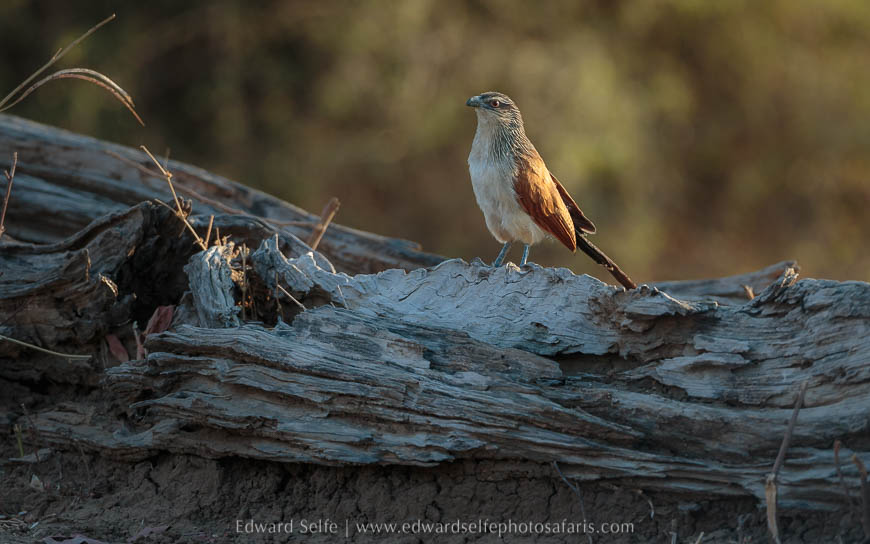
We focused on scenery for the rest of the morning and the afternoon, but we did find a beautiful young leopard in a tree, though she didn’t seem keen to move. We discovered why the following day.
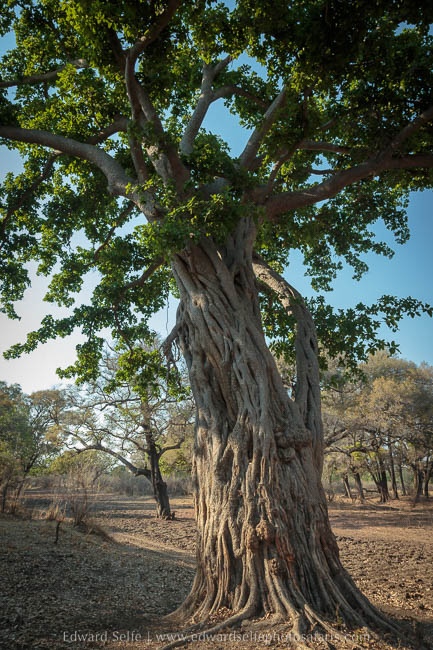

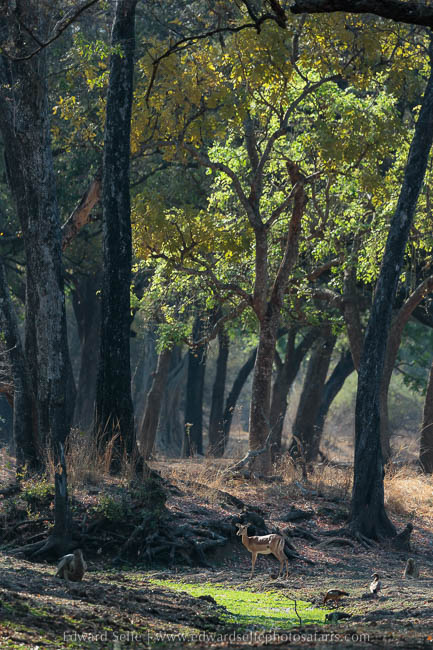
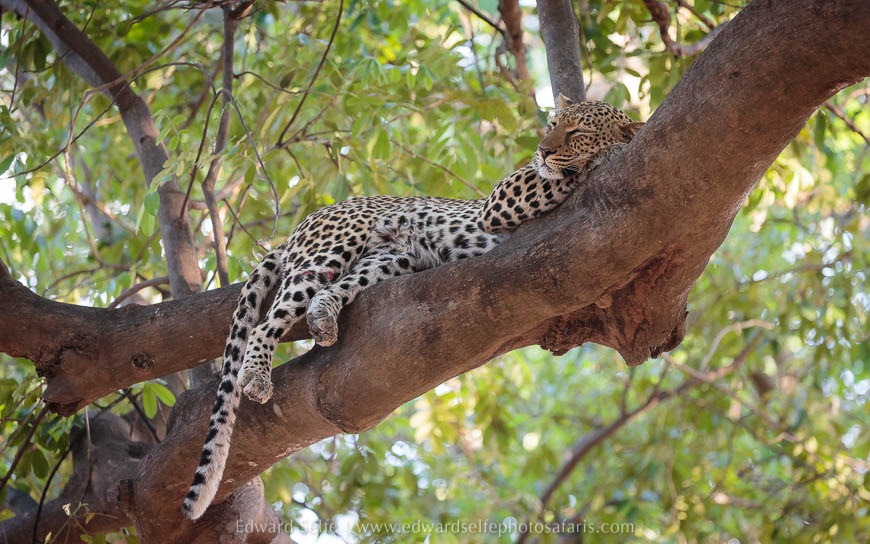
On our last day at Lion Camp, I was determined to find the lions in action. We hunted around and found them resting about 50 metres from a buffalo herd. They rose, stretched, head-bumped with each other, and appeared to go hunting, but then settled down once more in the shade of a tree. It was great to see them move, greet, and our adrenaline was pumping, so it was a bit disappointing to see it come to nothing! Such is wildlife sometimes, though we could hardly complain about bad luck on this trip!
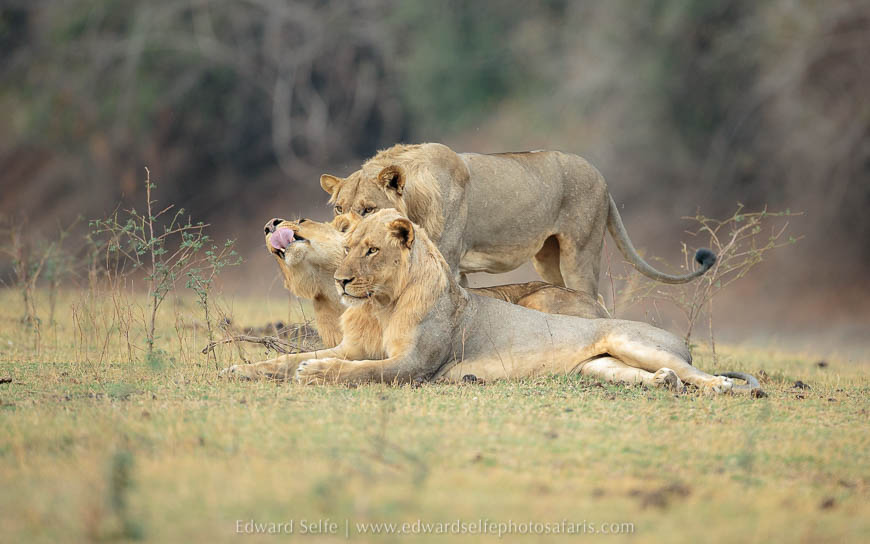

The morning was more than made up for by some great elephant sightings, and returning to camp, the sight of the lions being chased by elephants, which we viewed from the deck while having breakfast!
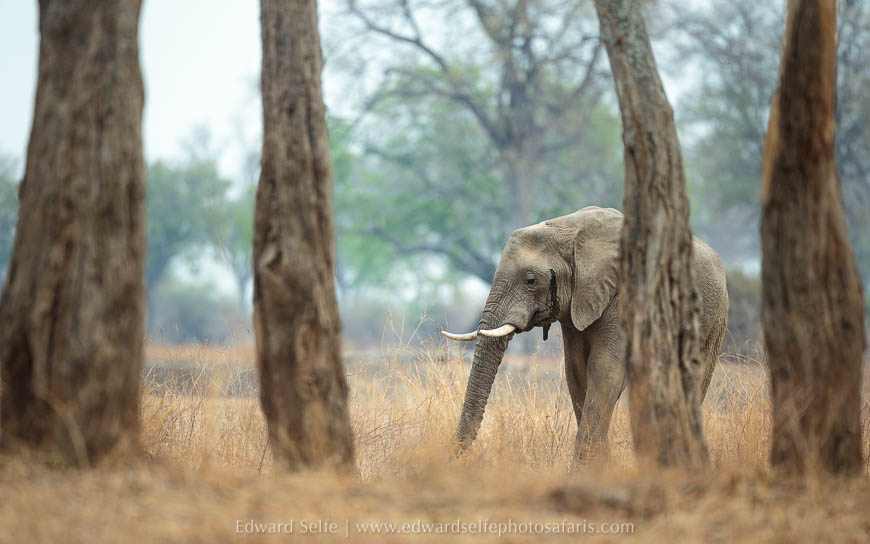


On our last afternoon, we went in search of good light and enjoyed some wonderful kudu & impalas. I planned to return to the lions in the night and hope that they pursued the buffalo who had spent the day in front of camp at the waterhole.
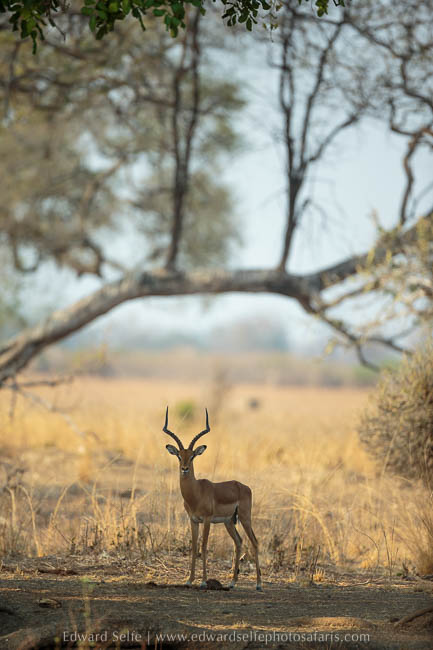
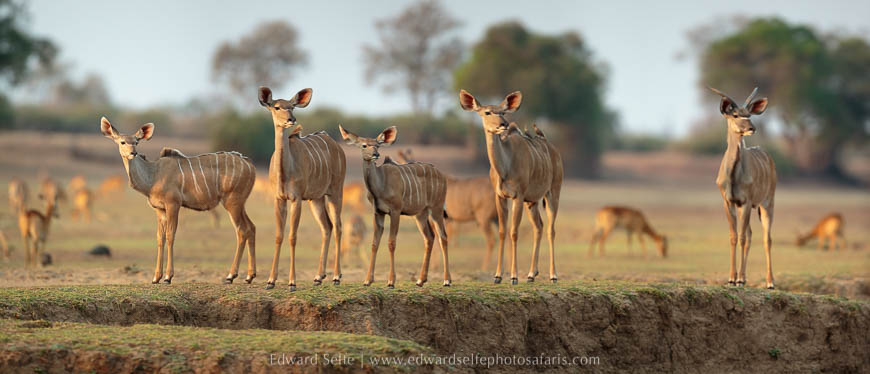

Heading back to the lions, I found the same young leopard from the previous day, resting at the side of the road. She had a large cut (probably from the claw of another leopard) on her hind-quarters. When she rose, she limped a little, and then hopped casually into a tree, so I suspect that she will survive the injury!

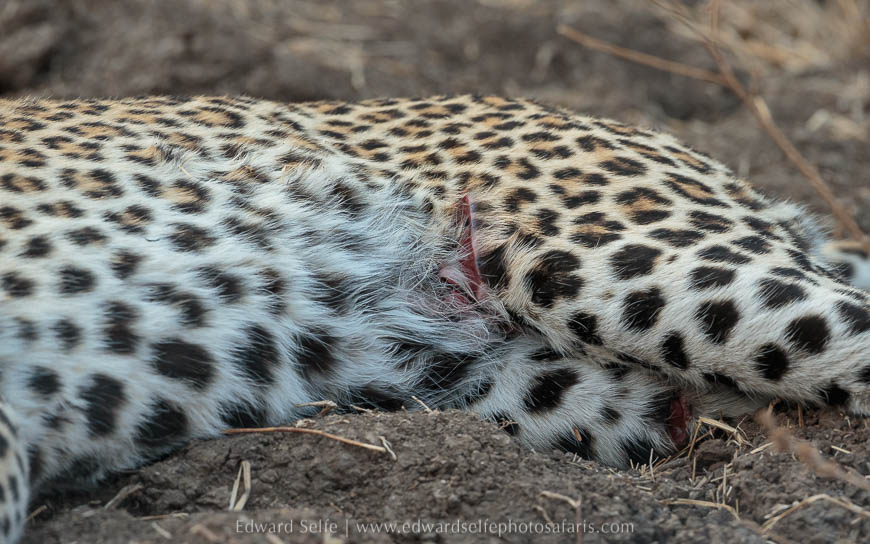
The lions eventually did very little, but we followed them with the red spotlight observing their techniques and hoping that they might approach the buffalo! Lion Camp’s lions had teased us during our stay there!
Our final morning required us to get to the airport by 08.00 so we took a speedy transfer drive through the National Park. On the way, we found a large herd of Cookson’s wildebeest in the largest ebony grove, which was stunning, and then settled back into the final hour of the journey to the airport.
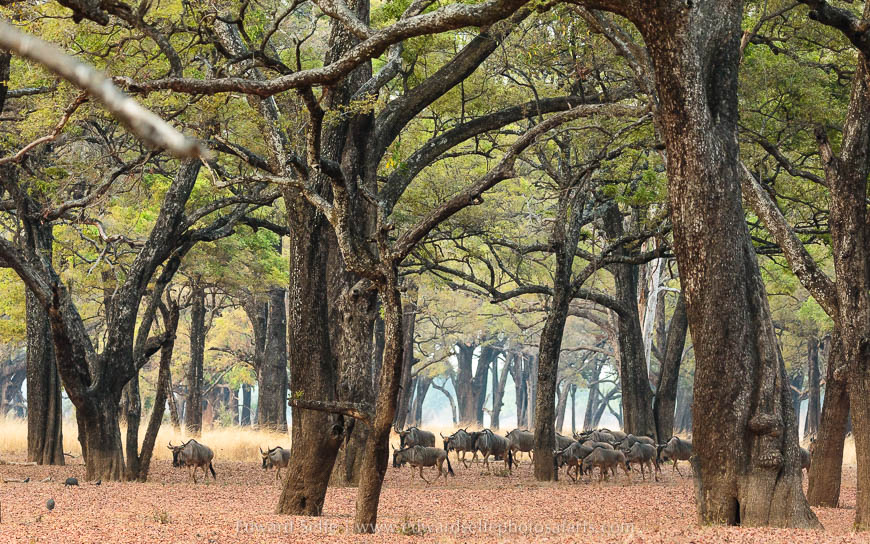
I had thoroughly enjoyed this trip. Thank you to all the guests for their good nature, enthusiasm and for embracing everything that came along. You were rewarded richly for braving the heat and dust of the Luangwa in September and I’m so pleased that Nature was kind to us. I hope to see you back some day, and until then, Fiona, Raj, Dr Tom, Dr Thomas and Dr Justin, thank you, it was a pleasure! Here’s a short video that I put together of some of the highlights, followed by some clips taken by Justin that show some of the behind the scenes footage too.
